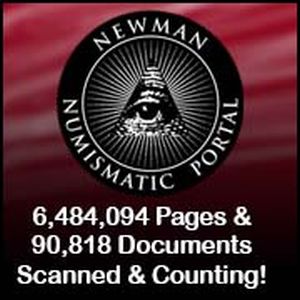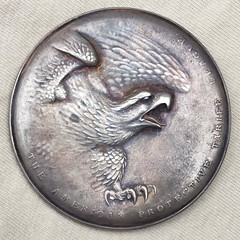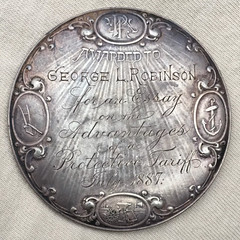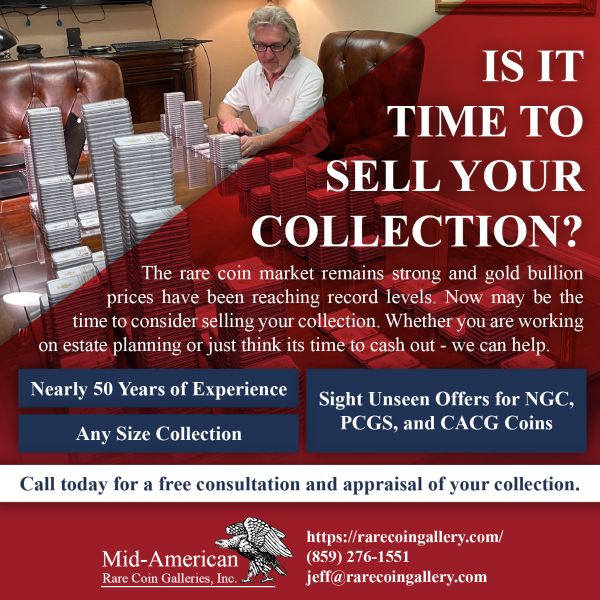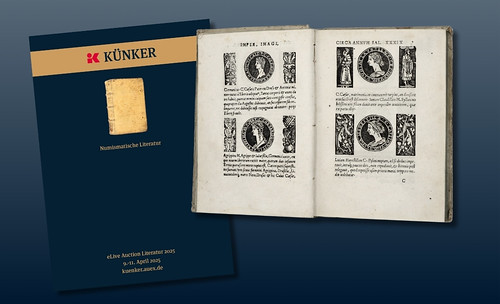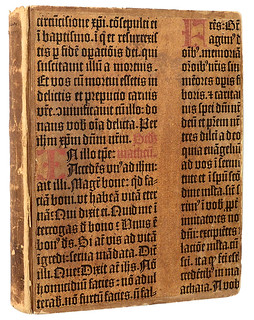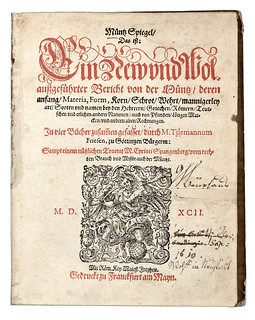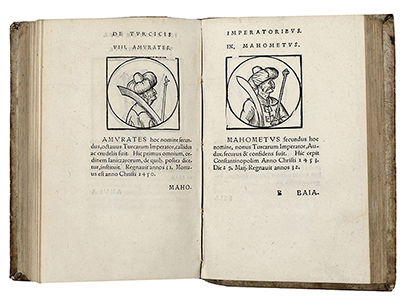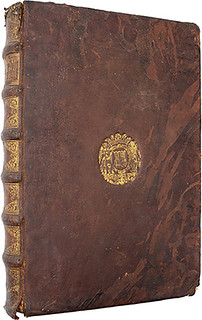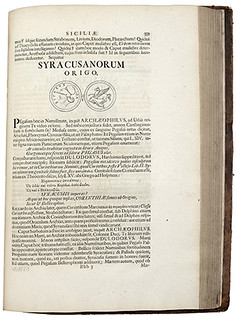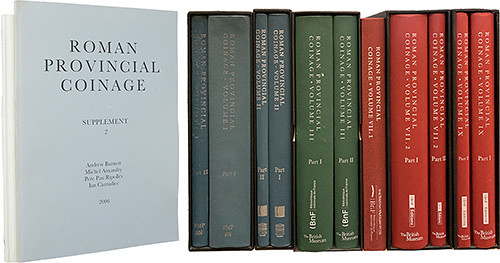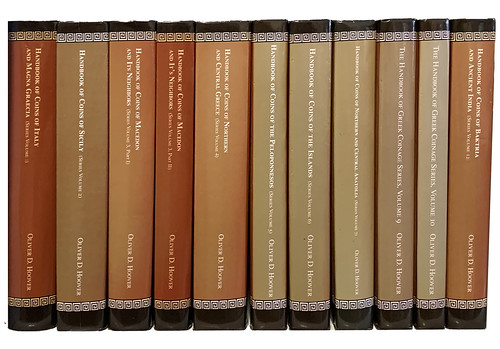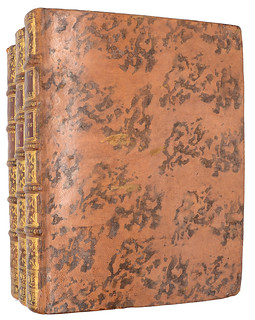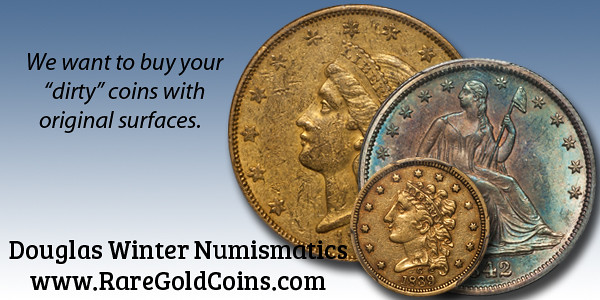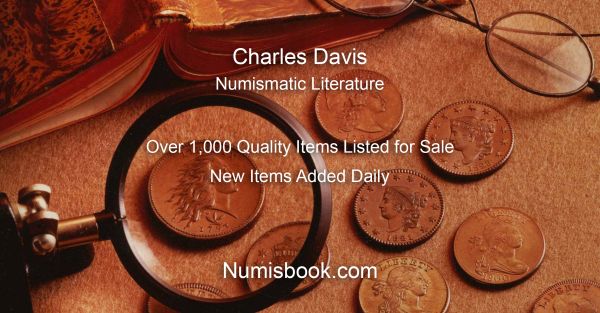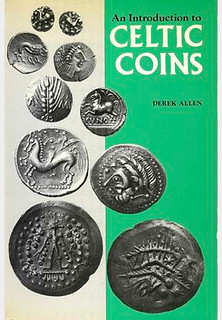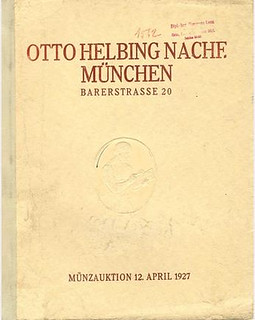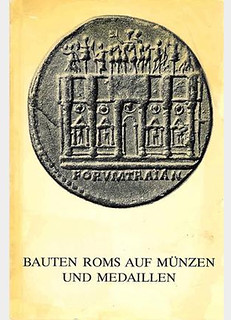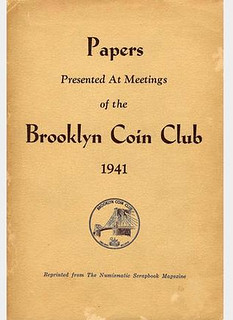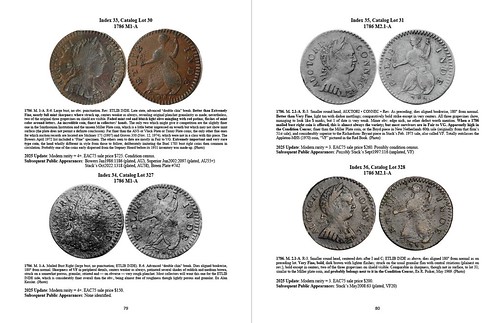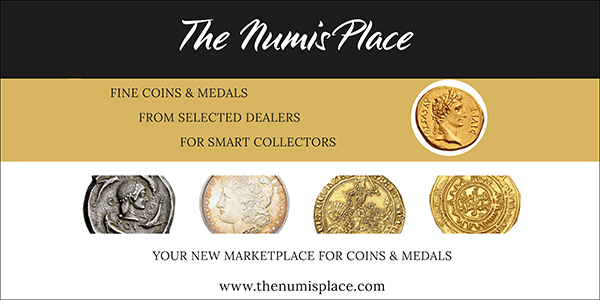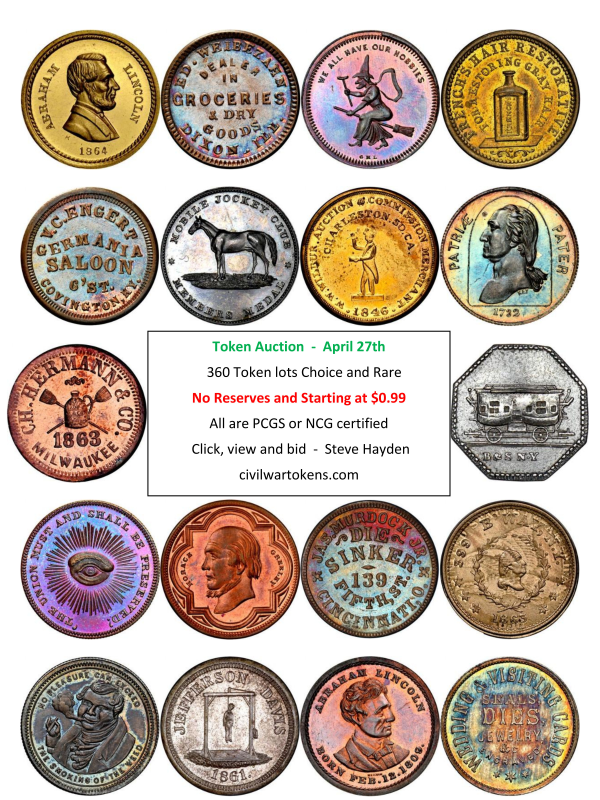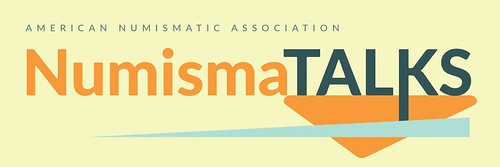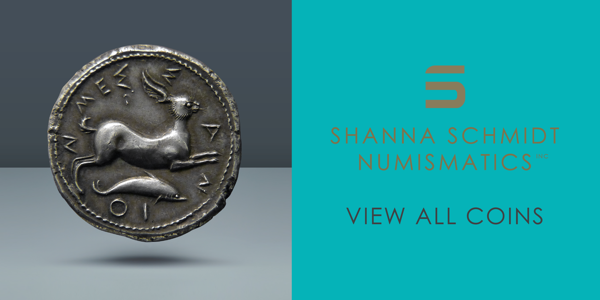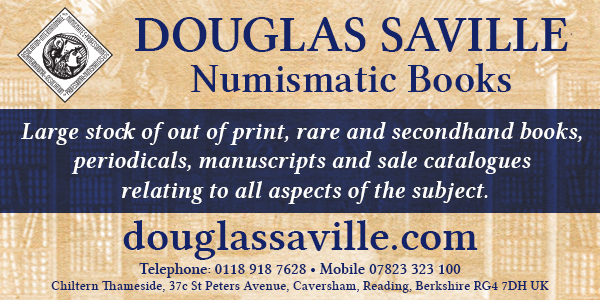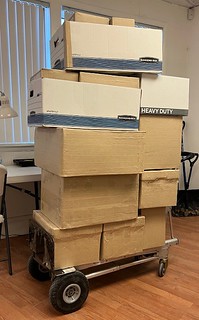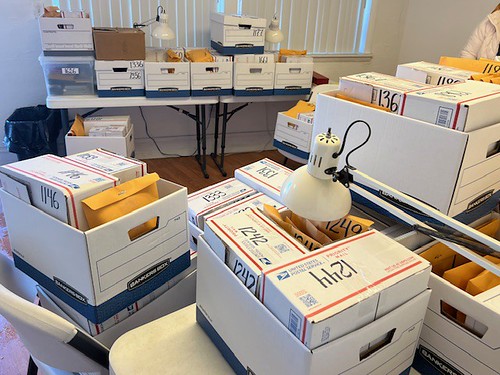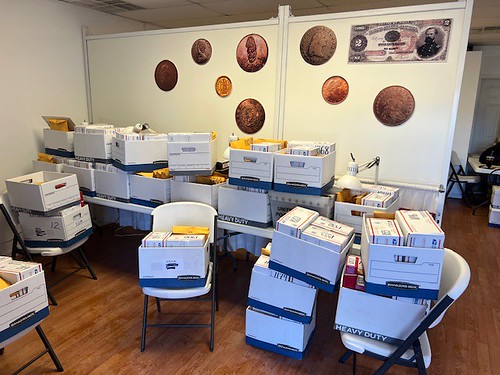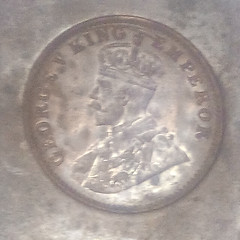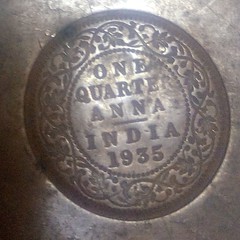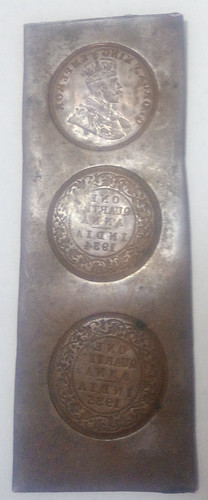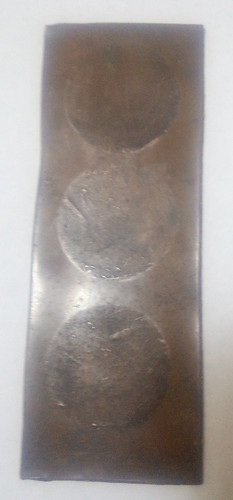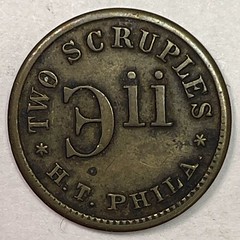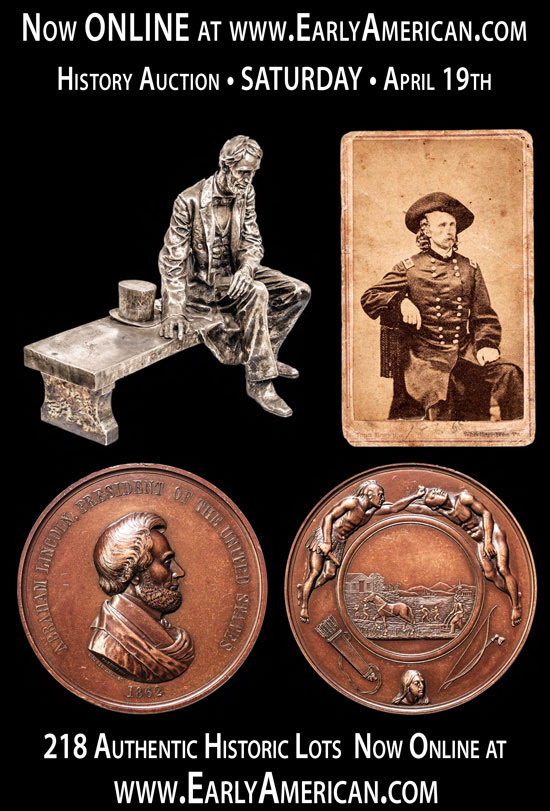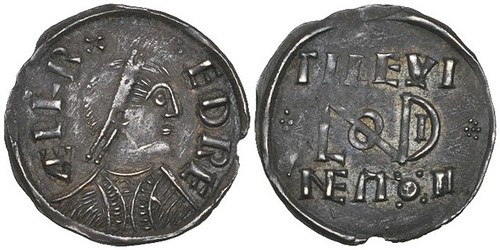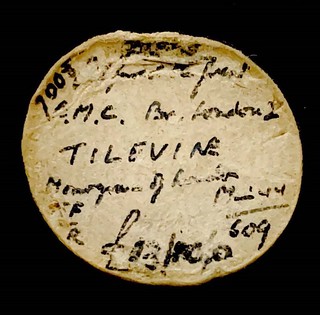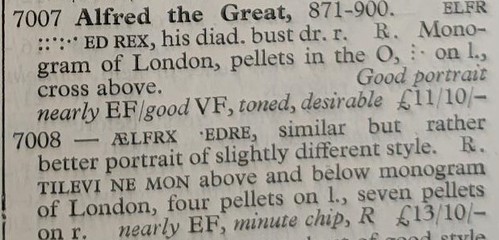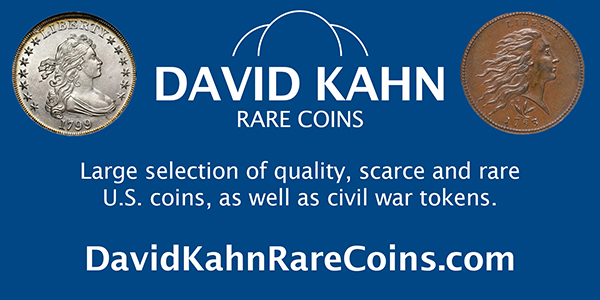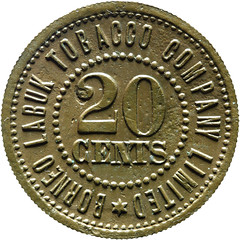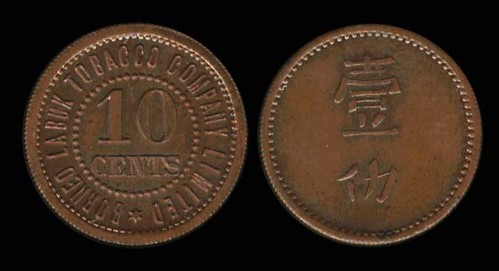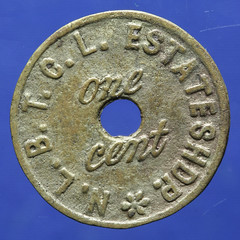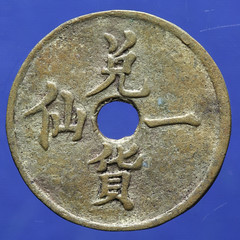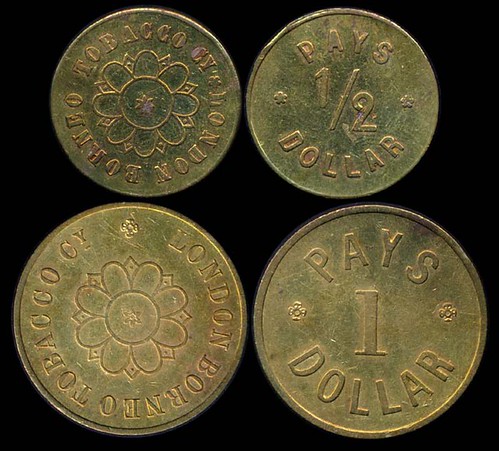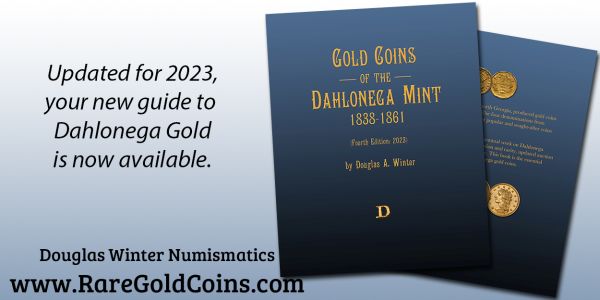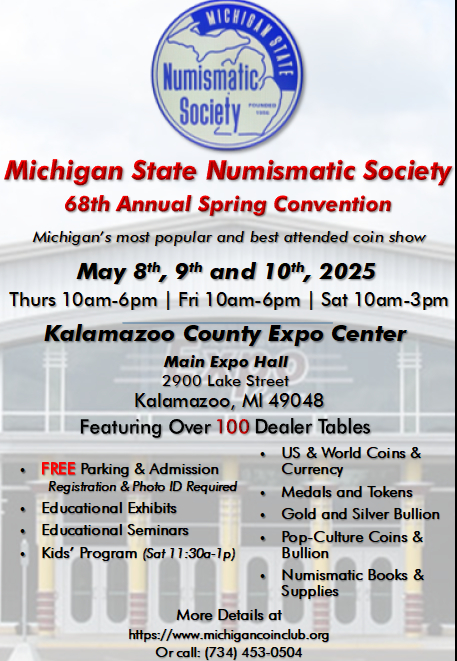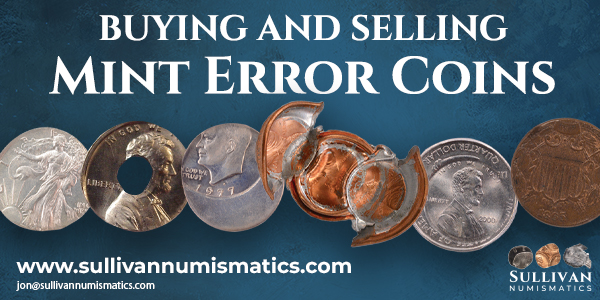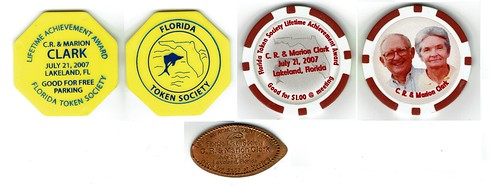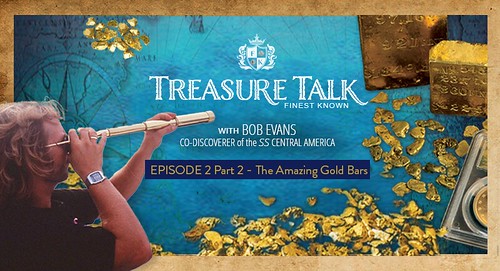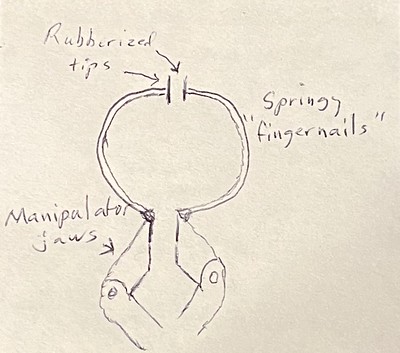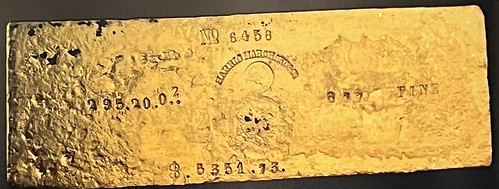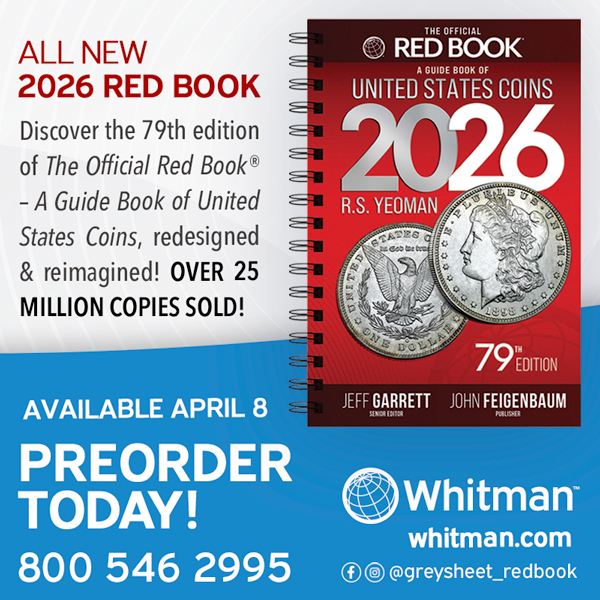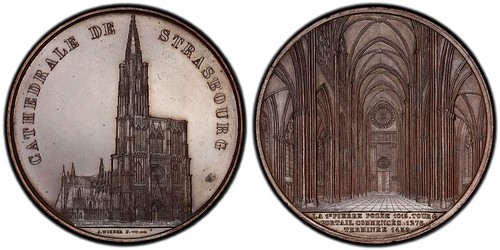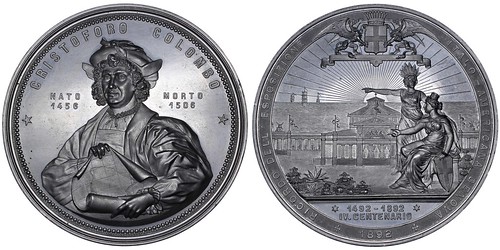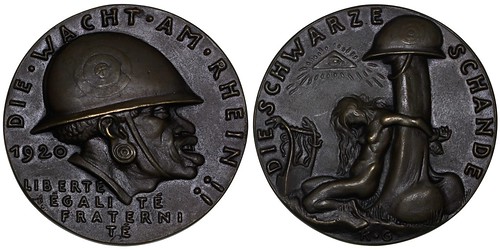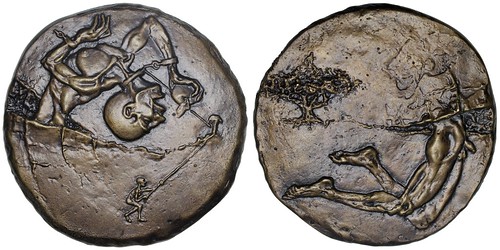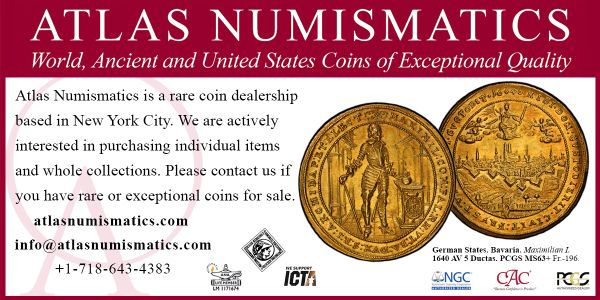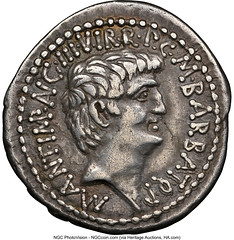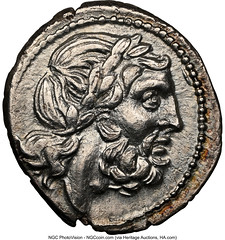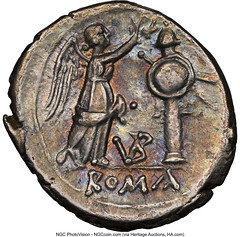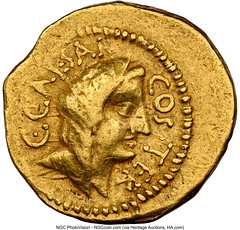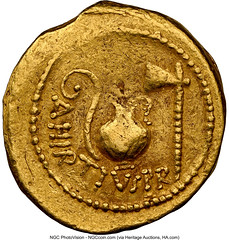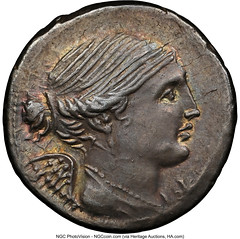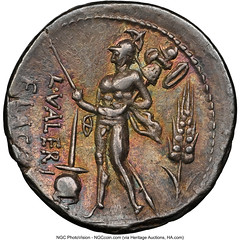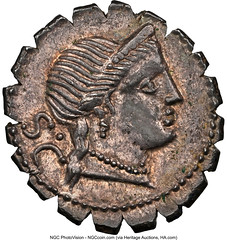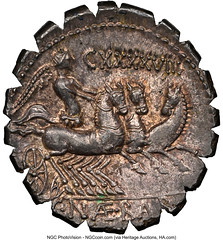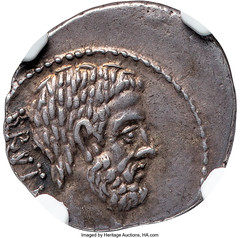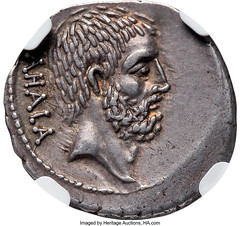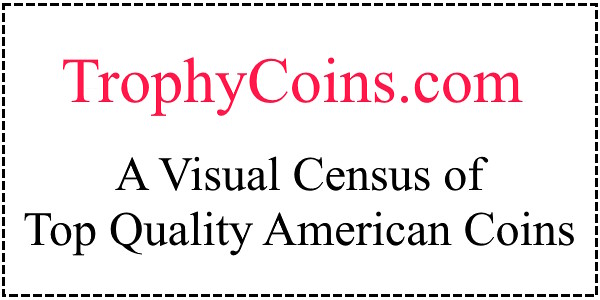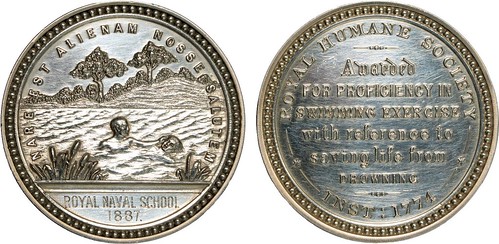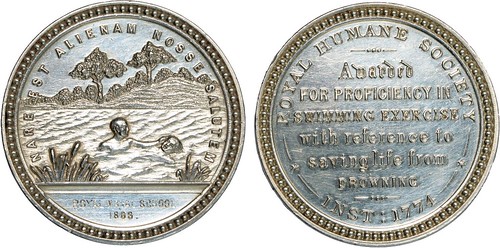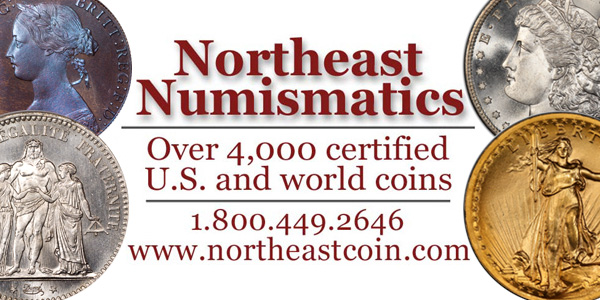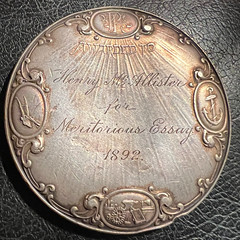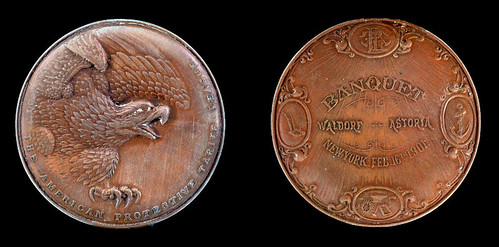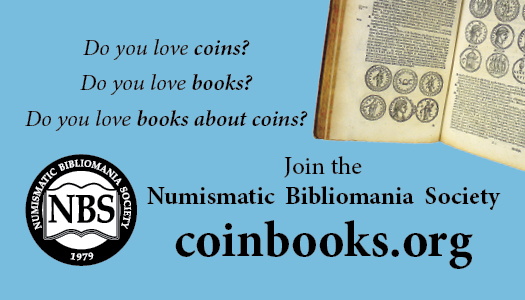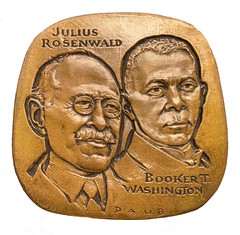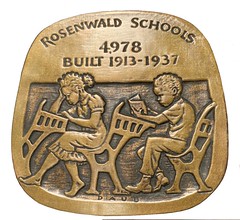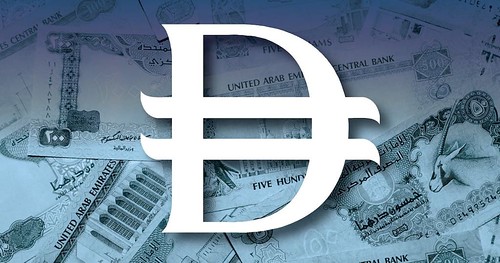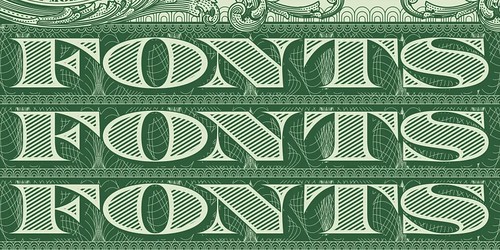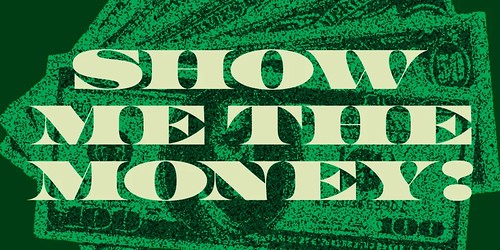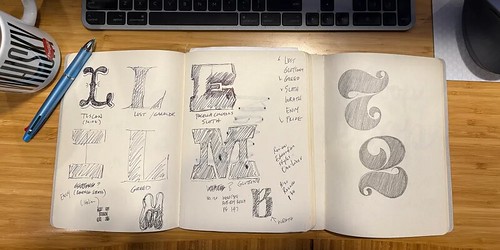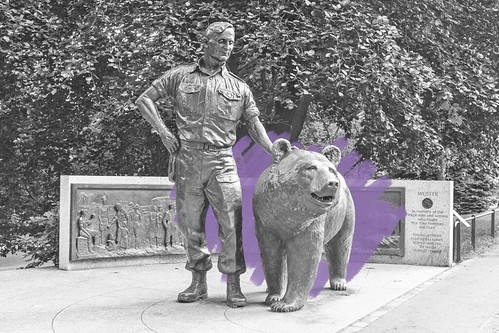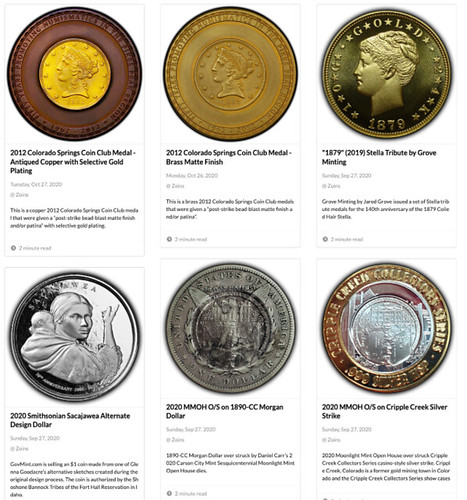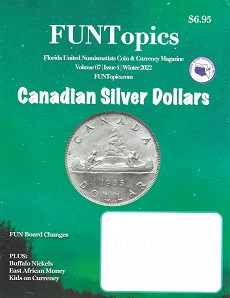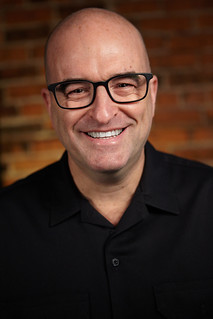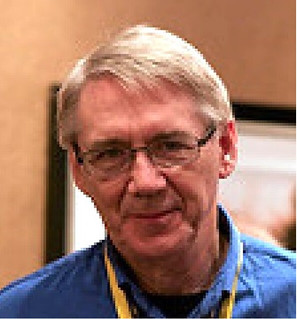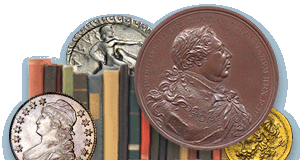
Visit our NBS Sponsors
About UsThe Numismatic Bibliomania Society is a non-profit association devoted to the study and enjoyment of numismatic literature. For more information please see our web site at coinbooks.org SubscriptionsThose wishing to become new E-Sylum subscribers (or wishing to Unsubscribe) can go to the following web page link MembershipThere is a membership application available on the web site Membership Application To join, print the application and return it with your check to the address printed on the application. Print/Digital membership is $40 to addresses in the U.S., and $60 elsewhere. A digital-only membership is available for $25. For those without web access, write to: Jeff Dickerson, Treasurer AsylumFor Asylum mailing address changes and other membership questions, contact Jeff at this email address: treasurer@coinbooks.org SubmissionsTo submit items for publication in The E-Sylum, write to the Editor at this address: whomren@gmail.com BUY THE BOOK BEFORE THE COINSale CalendarWatch here for updates! |
- WAYNE'S WORDS: THE E-SYLUM APRIL 6, 2025
- NBS BIBLIOTALK PODCAST WITH PATRICK IAN PEREZ
- KUENKER APRIL 2025 NUMISMATIC LITERATURE
- KOLBE & FANNING WEB SALE NUMBER 4
- NEW BOOK: THE CONNECTICUT COLLECTION
- MAY 2025 NNP SYMPOSIUM ANNOUNCED
- DENNIS TUCKER TO SPEAK AT NNP, ANA EVENTS
- VIDEO: CALIFORNIA SOUVENIRS
- NOTES FROM E-SYLUM READERS: APRIL 6, 2025
- A PIECE OF LONDONIA COINAGE PUZZLE
- BRITISH NORTH BORNEO TOKENS SOUGHT
- TARIFF TURMOIL TROUBLES COIN TRADE
- VOCABULARY TERM: REPAIR AND RESTORATION
- CHARLES ROY CLARK, JR. (1928-2024)
- TREASURE TALK WITH BOB EVANS, EPISODE 2.2
- NUMISMAGRAM MEDAL SELECTIONS: APRIL 6, 2025
- HERITAGE AUCTIONS: ROMAN REPUBLIC ANCIENT COINS
- AUSTRALIAN COIN WITH MORSE CODE
- ROYAL HUMANE SOCIETY SWIMMING MEDALS
- AMERICAN PROTECTIVE TARIFF LEAGUE MEDAL
- NEW MEDAL HONORS JULIUS ROSENWALD
- IRAN'S CAR MAKERS TRADE NUTS FOR BOLTS
- UAE CENTRAL BANK'S NEW DIRHAM SYMBOL
- FONT INSPIRED BY U.S. CURRENCY
- LOOSE CHANGE: APRIL 6, 2025
- FEATURED WEBSITE: PRIVATE MINT NEWS
- ABOUT THIS ISSUE: APRIL 6, 2025
Content presented in The E-Sylum is not necessarily researched or independently fact-checked, and views expressed do not necessarily represent those of the Numismatic Bibliomania Society.
WAYNE'S WORDS: THE E-SYLUM APRIL 6, 2025
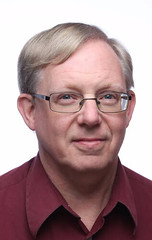 New subscribers this week include:
Kevin Watmough, courtesy Pam West.
Welcome aboard! We now have 7,257 subscribers.
New subscribers this week include:
Kevin Watmough, courtesy Pam West.
Welcome aboard! We now have 7,257 subscribers.
Thank you for reading The E-Sylum. If you enjoy it, please send me the email addresses of friends you think may enjoy it as well and I'll send them a subscription. Contact me at whomren@gmail.com anytime regarding your subscription, or questions, comments or suggestions about our content.
This week we open with a new NBS podcast, two numismatic literature sales, one new book, updates from the Newman Numismatic Portal, and more.
Other topics this week include Connecticut coppers, Pine Tree auctions, tokens of British North Borneo, tariff turmoil, medal and die repair and restoration, fixed price and auction offerings, Morse code on coins, Royal Humane Society medals, American Protective Tariff League medals, and a font inspired by U.S. currency.
To learn more about Whitman Brands, the 2025 NNP Symposium, Dennis Tucker, Bob Evans, C. R. Clark, Jr., Julius Rosenwald, apothecary weights, the elusive London monogram coin of King Alfred the Great, the five pieces of information gold bars are marked with, the Black Shame medal, the Royal Australian Corps of Signals, a gonzo pair of tweezers, and Wojtek, the Polish Army Bear Soldier, read on. Have a great week, everyone!
Wayne Homren
Editor, The E-Sylum
NBS BIBLIOTALK PODCAST WITH PATRICK IAN PEREZ
The latest episode of the Numismatic Bibliomania Society podcast is now available for listening. It's on the NBS web site but also available elsewhere. President Len Augsburger provided this report. -Editor
NBS Podcast Interviews Patrick Ian Perez
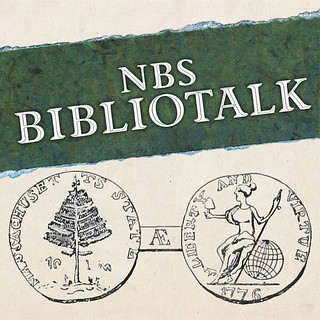 In the latest NBS podcast, Lianna Spurrier interviews Patrick Ian Perez, Vice President of Data and Content for CDN Publishing. Perez started at ground zero in 2008, working at a local coin shop, which he eventually acquired. Perez moved to the Greysheet in 2014, and then to CDN in 2015, as they acquired the Greysheet titles. Consolidation has continued in recent years, with the CDN / Whitman Brands merger in 2023, while separately Whitman has acquired the well-known Friedberg publications on paper money.
In the latest NBS podcast, Lianna Spurrier interviews Patrick Ian Perez, Vice President of Data and Content for CDN Publishing. Perez started at ground zero in 2008, working at a local coin shop, which he eventually acquired. Perez moved to the Greysheet in 2014, and then to CDN in 2015, as they acquired the Greysheet titles. Consolidation has continued in recent years, with the CDN / Whitman Brands merger in 2023, while separately Whitman has acquired the well-known Friedberg publications on paper money.
Perez is a firm believer that consistent pricing data builds the hobby, and in this interview discusses the challenges of distilling disparate sales into reliable pricing data. Perez also covers the Whitman publishing pipeline, known in recent years for a long string of authoritative works on a wide range of topics. Pat gives advice to aspiring authors and concludes by discussing his personal library. Finally, as we always ask interviewees, Pat makes recommendations on the best numismatic books for beginners.
I'm looking forward to listening! Check it out. -Editor
Link to Inside Whitman Brands, with Patrick Ian Perez
on the NBS website:
NBS PodCasts
(https://www.coinbooks.org/resources/podcast.html)
KUENKER APRIL 2025 NUMISMATIC LITERATURE
Künker is holding an auction of numismatic literature this week. Here's an excerpt from their blog article. -Editor
Our eLive Auction comprises 2,104 lots with a wide range of around 4,500 printed works on numismatics from 1523 to the present day. A particular highlight is a collection of around 780 auction catalogs from before the mid-20th century, including some extremely rare auctioneers' copies. These contain handwritten notes from the auction houses on all pre-bids and bids, as well as the hammer prices and names of the successful bidders.
The auction concludes with three extensive lots (lots 8105-8107) with a total of more than 5,000 auction and fixed-price catalogs, mainly from the last few decades.
From the start of the auction to the end, there are numerous opportunities to bid for single lots or mixed lots at attractive starting prices – mostly in the two to lower three-digit range. The highlights, which are spread across the entire collection, reach four-digit amounts in the estimated prices.
The collection contains a large number of important reference works on numismatics from antiquity (Greeks, Celts, Romans, Byzantium), the Middle Ages and modern times, with particular reference to German mints. Several numismatic periodicals are also represented and available for auction.
The collection also includes numerous works on classical studies, archaeology, history, art and cultural history – often in extensive mixed lots with over 500 publications. A smaller group of books on the science of orders and decorations completes the collection.
A special feature of this catalog are the numerous notes about authors, collectors, and book owners who marked their copies with bookplates or handwritten entries. Many of these personalities have been almost forgotten today. With our research, we would like to give them more prominence again and at the same time make a contribution to the social topography and history of collecting.
From the wealth of books on offer, we would like to highlight a few important works below.
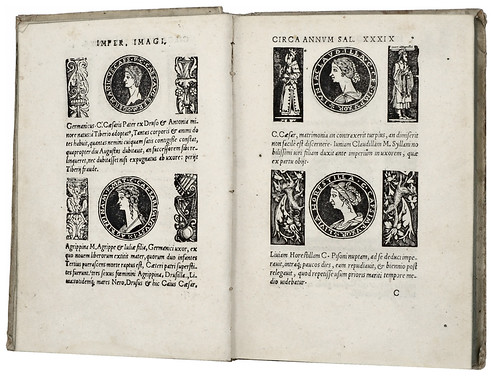
Lot 6033: HUTTICH. J.Imperatorum Romanorum et Caesarun Vitae, cum Imaginibus ad uiam effigiem expressis
For more information, or to bid, see:
http://kuenker.auex.de/
To read the complete article, see:
eLive Auction with Numismatic Literature
(https://www.kuenker.de/blog/auction-sales/previews-and-reviews/elive-auction-numismatic-literature/)
KOLBE & FANNING WEB SALE NUMBER 4
Numismatic Booksellers Kolbe & Fanning have announced a new web sale closing Thursday, April 10, 2025. Here's the announcement. -Editor
We will be holding the fourth of our new series of Web Sales of Numismatic Books on Thursday, April 10, starting at 12:00 PM Eastern. Web Sale #4 focuses on inexpensive but useful books, catalogues and other publications on coins from all times and places. It will take place live online, in much the same format as our Premier Auctions, and all lots in the Web Sale will begin at a very low $10 opening bid.
Bidders may register for the sale, browse lots, and place absentee bids beginning immediately at bid.numislit.com.
Our Premier Auctions will continue to be held several times a year in the same format as usual. Customers who participate in those auctions will be able to register for our new Web Sales using their existing log-in information. New bidders will have to establish an account for online bidding by creating an account at bid.numislit.com or using the links below.
Register early to bid online
Kolbe & Fanning use Auction Mobility as our third-party online bidding platform, which is separate from our retail site. Auction Mobility is an app-based platform allowing users the ability to participate in the sale through phones, tablets and computers. To register for the sale, bidders must go to
bid.numislit.com and sign up. Once you have set up an account, you may browse lots, place advance bids, or participate in the live sale online. Those wishing to participate on their devices can download the Kolbe & Fanning app through the Apple or Google Play Store.
Kolbe & Fanning Numismatic Booksellers LLC is a licensed and bonded auction firm in the State of Ohio, and our sales are conducted by licensed auctioneers. For more information, please see the Kolbe & Fanning website at numislit.com or email David Fanning at df@numislit.com. To register for the sale, go to bid.numislit.com. We look forward to your participation.
THE BOOK BAZARRE
NEW BOOK: THE CONNECTICUT COLLECTION
A new book of interest to both colonial coin devotees and numismatic bibliophiles has just been published. The new book by Randy Clark commemorates the classic 1975 Pine Tree sale of a landmark collection of Connecticut state coppers. -Editor
The Colonial Coin Collectors Club Announces a New Book
THE CONNECTICUT COLLECTION, FEBRUARY 1975
A 50TH ANNIVERSARY RETROSPECTIVE OF EAC75
By Randall Clark
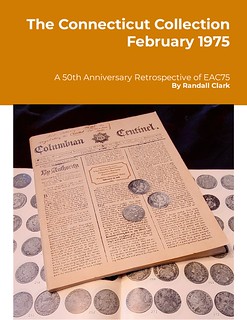 In February 1975, a landmark sale of Connecticut state
coppers was held in New York City that would
illustrate, as never before, the vastness of the series and
how it could be collected. It was the broadest holding
of such coppers yet assembled, with photographs and
detailed descriptions of each coin placed in a soft-
covered auction catalog. Nothing so well prepared,
illustrated, and researched had ever been done—an
effort that would not be exceeded for another 45 years.
The sale, held by the Pine Tree Auction Company, is
known familiarly as
In February 1975, a landmark sale of Connecticut state
coppers was held in New York City that would
illustrate, as never before, the vastness of the series and
how it could be collected. It was the broadest holding
of such coppers yet assembled, with photographs and
detailed descriptions of each coin placed in a soft-
covered auction catalog. Nothing so well prepared,
illustrated, and researched had ever been done—an
effort that would not be exceeded for another 45 years.
The sale, held by the Pine Tree Auction Company, is
known familiarly as EAC75
because it was
conducted during the annual Early American Coppers
(EAC) convention, held the weekend of February
14–16, 1975.
The year 2025 represents the Golden 50th Anniversary of this Connecticut coppers sale, and a publication is being made available to commemorate the event.
The Connecticut Collection, February 1975 follows the background story for formation of this exciting Connecticut coppers collection, details of who was bidding during the sale, what they won, and a discussion of how EAC75 effected collectors for 50 years.
In addition, The Connecticut Collection, February 1975 fully illustrates each Connecticut lot with an enlarged 2.5 image from original positives and negatives, supplemented with modern color images where available. Lot descriptions are transcribed from the original catalog and updated with errata circulated by cataloger Walter Breen soon after the sale. Coins are shown listed in Miller variety order, rather than original EAC75 order based on Breen's mint assignments, to enable easy access to the materials.
This 268-page, 8.5"x11" hardcover publication is available now from Kolbe & Fanning Numismatic Booksellers (www.numislit.com) & Charles Davis Numismatic Literature (www.vcoins.com).
Other than Frank Colletti's "Guide Book of the Guide Book" (A Guide Book of the Official Red Book of United States Coins), I can't think of another book thusly dedicated to a single book or catalog. What a marvelous idea to recreate the record of a collection with modern photographs. Jim Neiswinter did something similar for the Levick plate of 1793 cents, and Ron Guth has been researching provenance of many Eliasberg collection coins. Congratulations - a great idea, and one I hope is carried out for other landmark collections of the past. -Editor
MAY 2025 NNP SYMPOSIUM ANNOUNCED
The NNP Symposia are highlights of the numismatic year, bringing great speakers direct to you remotely (and like last year, in person, too!). Here's the announcement. Another article elsewhere in this issue highlights Dennis Tucker's Symposium presentation. -Editor
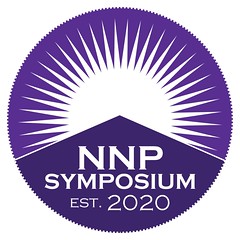 The Newman Numismatic Portal today announces the next NNP Symposium, which will
take place April 24-26, in conjunction with the Central States Numismatic Society convention in
Schaumburg, IL. Sessions will be available to in-person show attendees and will be livestreamed for
those wishing to view remotely.
The Newman Numismatic Portal today announces the next NNP Symposium, which will
take place April 24-26, in conjunction with the Central States Numismatic Society convention in
Schaumburg, IL. Sessions will be available to in-person show attendees and will be livestreamed for
those wishing to view remotely.
The NNP Symposium is a free event that brings together a variety of numismatic speakers and covers a wide array of numismatic subjects. Featuring approximately twenty presentations, attendees will easily find topics of interest. This is the ninth such event, which was launched by the Eric P. Newman Numismatic Education Society in fall 2020 in response to the pandemic.
In conjunction with the Central States Numismatic Society Nebraska State Showcase, the Symposium will feature several speakers with Nebraska connections, including Mark Engler, past Superintendent of Homestead National Historic Park, who will speak on the evolution of the Nebraska state quarter. For collectors of paper money, Matthew Hansen will present on the Gerome Walton Collection of Nebraska National Bank Notes, while Derek Higgins will cover notes issued by Omaha banks. Nebraska is well-known numismatically for the Byron Reed coins at the Durham Museum in Omaha, and Kristen Rowley, Durham Museum Collection Manager, will speak on this important collection.
NNP Symposium attendees may subscribe to email updates at https://nnpsymposium.org, and a full schedule of events is posted at https://nnpsymposium.org/schedule. Zoom links for individual sessions will be publicly posted shortly before the event. Online registration is not required to attend the Symposium. For further information on the Central States Numismatic Society convention, see https://www.csns.org/convention.
DENNIS TUCKER TO SPEAK AT NNP, ANA EVENTS
Author Dennis Tucker will give presentations for the 2025 Newman Numismatic Portal Symposium and American Numismatic Association this month and next. Another article elsewhere in this issue provides more information on the NNP Symposium. -Editor
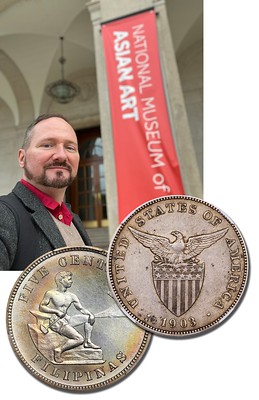 Georgia)—Award-winning author Dennis Tucker will give a presentation for the 2025
Newman Numismatic Portal Symposium on Thursday, April 24, and will present a
Georgia)—Award-winning author Dennis Tucker will give a presentation for the 2025
Newman Numismatic Portal Symposium on Thursday, April 24, and will present a
NumismaTalk
for the American Numismatic Association on Thursday, May 8. His subjects are
the design process for U.S. coins and medals, and Philippine coins minted by the United States.
Tucker's NNP Symposium talk is titled From Concept to Pocket Change: How U.S. Coins Are
Designed.
He draws on eight years of experience as the numismatic specialist of the Citizens
Coinage Advisory Committee, as well as his visits to every production facility of the United
States Mint during his 2004–2024 tenure as publisher at Whitman Publishing. While Tucker
served on the CCAC (a committee that advises the Secretary of the Treasury), he reviewed
hundreds of design proposals for dozens of coin and medal programs.
 In his illustrated talk, he
goes behind the scenes in Congress, at the U.S. Mint, in the artist's studio, and on the Mint's
production floor to show how a coin or medal goes from the
In his illustrated talk, he
goes behind the scenes in Congress, at the U.S. Mint, in the artist's studio, and on the Mint's
production floor to show how a coin or medal goes from the idea
stage to a finished product.
This lecture will be presented virtually at the Central States Numismatic Society's 86th
Anniversary Convention, at 3:00 pm Central on Thursday, April 24. The convention is held at
the Schaumburg Renaissance Hotel and Convention Center, in Schaumburg, Illinois, close to
Chicago's suburban Woodfield Mall.
The NNP Symposium is hosted and livestreamed on behalf of the Newman Numismatic Portal, the most comprehensive online resource for numismatic research and reference material, with a focus on American coinage and currency. The NNP is online at nnp.wustl.edu.
In May, Tucker's NumismaTalk—part of the American Numismatic Association's twice-
monthly live webinars—is on Collectible World War II Money: U.S./Philippine Coins.
During
World War II, more than a million American service members fought in the Pacific Theater to
help free the Philippines from Japanese control. When they came home after the war, many of
them carried local souvenirs of their service. These included silver and bronze coins that were
minted for the Philippines but bear the words UNITED STATES OF AMERICA. What's the
story behind these coins? Are they rare? How much are they worth today? This richly illustrated
presentation tells about these special World War II–related coins and their history starting in the
early 1900s—part of the unique historical and numismatic connection between the United States
and the Philippine Islands. The talk will be held Thursday, May 8, at 12:00 noon Mountain Time.
The ANA bills its NumismaTalks program, part of its eLearning Academy, as a chance to
expand your numismatic knowledge with free webinars presented by top industry experts.
The
hour-long presentations are recorded and archived online at
info.money.org/numismatalks.
VIDEO: CALIFORNIA SOUVENIRS
The David Lisot Video Library on the Newman Numismatic Portal can be found at:
https://nnp.wustl.edu/library/multimediadetail/522852
We highlight one of his videos each week in The E-Sylum. Here's one from 2009 with Bill Hyder and Jeff Shevlin about so-called dollars and store cards of L.H. Moise. -Editor
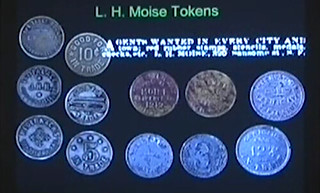 California communities struggled with the impact of the Long Depression. Many turned to local celebrations to stimulate tourism and the local economy. The San Francisco firm of L.H. Moise produced a series of so-called dollars and store cards featuring the California state seal. William D. Hyder is a contributor to "The Numismatist" and "TAMS Journal," and past recipient of the ANA's Heath Literary Award. Jeff Shevlin is an expert in the field of so-called dollars and an instructor at the ANA's Summer Seminar.
California communities struggled with the impact of the Long Depression. Many turned to local celebrations to stimulate tourism and the local economy. The San Francisco firm of L.H. Moise produced a series of so-called dollars and store cards featuring the California state seal. William D. Hyder is a contributor to "The Numismatist" and "TAMS Journal," and past recipient of the ANA's Heath Literary Award. Jeff Shevlin is an expert in the field of so-called dollars and an instructor at the ANA's Summer Seminar.
Speaker(s): William D. Hyder.
To watch the complete video, see:
California Souvenirs: L.H. Moise Medals and Store Cards
(https://youtu.be/n-35cOhFfOU)
California Souvenirs: L.H. Moise Medals and Store Cards
(https://nnp.wustl.edu/library/book/557323)
NOTES FROM E-SYLUM READERS: APRIL 6, 2025
Reprinters of Books on Ancient Numismatics
Bill Daehn writes:
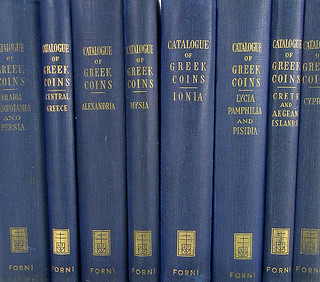 "In the March 30th edition of The E-Sylum, you asked about other major publishers of numismatic book reprints. In the ancient coin field, the most notable are Argonaut Publishers (Chicago), Ares Publishers (Chicago), Attic Books Ltd. (New York), Obol International (Chicago), and Forni (Italy). Without these publishers, a vast amount of important numismatic scholarship would have been difficult (and expensive) to acquire. Together, they made available a very large number of important but otherwise out-of-print titles."
"In the March 30th edition of The E-Sylum, you asked about other major publishers of numismatic book reprints. In the ancient coin field, the most notable are Argonaut Publishers (Chicago), Ares Publishers (Chicago), Attic Books Ltd. (New York), Obol International (Chicago), and Forni (Italy). Without these publishers, a vast amount of important numismatic scholarship would have been difficult (and expensive) to acquire. Together, they made available a very large number of important but otherwise out-of-print titles."
Thank you - great list. -Editor
To read the earlier E-Sylum article, see:
NOTES FROM E-SYLUM READERS: MARCH 30, 2025 :
Publishers of Numismatic Book Reprints
(https://www.coinbooks.org/v28/esylum_v28n13a11.html)
April Fool
Numismatic authors Rich Kelly and Nancy Oliver write:
"The Emerging Coins section in last week's E-Sylum has us scratching our heads. First, is this a joke from Pete, or is there some fact?
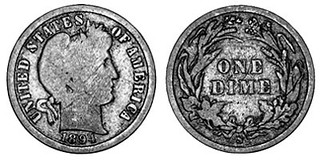 "Our question is on the 1894-S dime. Hallie never received a piece of that rarity from her father, and I'm sure that you know the real story. Second, 11 year old "Kelly Oliver" found an 1894-S and couldn't fit it into a coin album.
"Our question is on the 1894-S dime. Hallie never received a piece of that rarity from her father, and I'm sure that you know the real story. Second, 11 year old "Kelly Oliver" found an 1894-S and couldn't fit it into a coin album.
"Since our last names were used, it brought our attention to it as well. Anyway, confused in California, and sure the joke might be on us."
Yep, that was one of the dicey April Fool items in the last issue, along with the abolishment of the terms "obverse" and "reverse" and selling the gold in Ft. Knox. But stay tuned on that last one. -Editor
Pete Smith writes:
"The reference to Kelly Oliver was not intended to be a joke on them. Rather, it was intended to be a tribute to their research into the 1894-S dimes."
Vic Mason writes:
"Enjoyed your April Fool's joke!"
Thanks Pete, David Pickup, Steve Shupe and all the good sports out there who enjoyed the pranks. -Editor
To read the earlier E-Sylum articles, see:
EMERGING COINS
(https://www.coinbooks.org/v28/esylum_v28n13a15.html)
LINGUISTS ABOLISH OBVERSE AND REVERSE
(https://www.coinbooks.org/v28/esylum_v28n13a14.html)
FORT KNOX GOLD TO BE SOLD!
(https://www.coinbooks.org/v28/esylum_v28n13a23.html)
Numismatic Auctions Sale 69 Report
I asked Steve Davis of Numismatic Auctions LLC about the results of their recent sale. -Editor
Steve writes:
"The sale went great! The auction results exceeded presale estimates by about 38-40%. Shipping it has been insane…
"I think some people thought we were joking that we had 5000+ lbs of coins and 1200-2000 lbs of literature to ship this auction… from reviewing our postal and FedEx receipts I think our estimates were LOW. I think our level of service as a mom and pop op is quite admirable, though some patrons have the Amazon mentality and think everything should be next day…"
Steve sent along these photos of the massive post-sale shipping operation. -Editor
Steve adds:
"On a side note, we now find check payments at a far lower scam or fraud rate than credit card or debit or payment apps. When we receive a check it typically has a home address and phone number, bank info and they also typically provide a work address and alt phone numbers and email addresses whereas card users who default typically shield to minimal ID data so it is nearly impossible to follow up. Guys buy bullion or related products on a card linked to a PO Box or provide a UPS store or temp/alt shipping address or C/O agent and then once they get the items and the chargeback funds they disappear! We have totally done away with CC/debit or app payments due to fraud, primarily chargebacks after receipt of coins - which the CC companies rarely refund to the vendor even after multiple appeals and documentation. Sad world we live in…I remember always shipping coins before the checks hit, that was the good ole days when we knew everyone by name, their wives, kids and dogs too!"
To read the earlier E-Sylum articles, see:
NUMISMATIC AUCTIONS LLC SALE 69
(https://www.coinbooks.org/v28/esylum_v28n05a23.html)
MORE ON NUMISMATIC AUCTIONS LLC SALE 69
(https://www.coinbooks.org/v28/esylum_v28n06a20.html)
1935 India Quarter Anna Trial Strikes?
Web site visitor Mazher Mahmood submitted these images of what looks like three trial strikes of a 1935 India Quarter Anna on a rectangular bronze plate. Here's an example of the coin, followed next by reversed images of the trial obverse and reverse, and followed last by cropped versions of Mazer's original photos (two front and one back). What do readers make of this? Does it appear genuine? Are other such trial strikes known? -Editor
Mazher adds:
"I am a philatelist, numismatist and banking historian. My banking research papers are on record with the State Bank of Pakistan Museum. I am member of the British Revenue Society and various societies in Pakistan."
Coin image source:
Coin India 1/4 Anna George V - 1935
(https://www.numiscollection.com/india-1/4-anna-george-v-1935-a13100-en.html)
Two Scruples Apothecary Weight
Ken Spindler writes:
"You can give this to people you meet who have no scruples."
Indeed. This eBay offering is from my friend Jonas Denenberg - check out his other auction lots. He really does scour the nation's coin shows hauling back a large selection of fresh numismatic items. -Editor
To read the complete lot description, see:
Two Scruples Apothecary Weight Token Extremely Fine XF Coin #19295
(https://www.ebay.com/itm/396394238673)
A PIECE OF LONDONIA COINAGE PUZZLE
Contributor EM submitted this research piece on an elusive London monogram coin of King Alfred the Great. Thank you. -Editor
In William A. Mackay's famous research on King Alfred the Great London Monogram coinage and its Danelaw imitations (British Numismatic Journal, volume 89, 2019, pages 19-107, further referenced MacKay) the author provides classification of all traceable first pennies and halfpennies issued by the Royal Mint in the name of King Alfred the Great who united England and has taken its capital City of London in the year of 886 A.D. All traceable Danelaw imitations of the said coinage was also classified in this paper. The author stated however that there will be other coins from older collections that will come to light later. London Monogram is a skillfully worked arrangement of the name Londonia designed by the Royal Mint first moneyers in the IX century, and Londonia penny is very frequently shown to the visitors of the Royal Mint Museum.
London Type B2 penny has obverse showing King Alfred the Great diademed bust in a neat tunic with concave shoulders (O2). On reverse there is London monogram and cross pattee on each side and the name of the moneyer – Tilevine above and below the monogram (R4). This type was known to W. Mackay from a single coin (MacKay B2 4 Pl. 3, 45) which first came to the market in 1918 at Sotheby's auction selling the famous Carlyon-Britton collection. London Type B3 pennies are known in relatively large variety, including the one with the same reverse R4 but different portrait on obverse – O3 (MacKay B3 5 Pl. 3, 46).
In his research on London type B coins (MacKay p. 40) W. Mackay established that O2 obverse die of London Type B2 was later replaced by the Royal Mint with the obverse O3 die of London Type B3, however the reverse die R4 survived the obverse transition thus becoming a link between London types B2 and B3. This is illustrated on Fig.1
Owing great respect to W. MacKay's research, the following question still remained:
was Type B2 obverse O2 used only with the link
reverse R4? This question
was hard to answer having a single coin of this type imaged at the time of MakKay
writing. However, since obverse dies of hammered coins were known to be aging
slower than reverse dies (as they were usually placed at the bottom of the structure
and not been struck with a hammer directly), it would be reasonable to think of
another reverse dies, perhaps even totally previously unknown, which might have
been used with the obverse O2.
This was a mystery until November 2024 when Morton & Eden brought previously unimaged Alfred the Great London monogram penny (fig. 2) to the market at their auction 129 (lot 18) as a part of the famous Motcomb Collection of British Coins (part III) sold with the old Seaby ticket (Fig 3) dating back to 1944. This coin appears to be the second known of London B2 type with its reverse image unseen before November 2024. It was later on graded AU 53 by NGC and its high resolution true vision image is already available at https://www.ngccoin.com/certlookup/6948283-001/53/
This coin was described by Morton & Eden as of London type B2 (O2/R4var). Its reverse is similar to R4 however instead of cross pattee on each side of the monogram has 4 pellets to the left and 7 pellets to the right, diagonal bar to A omitted.
So, the mystery is no longer a mystery and the answer to the London type B2 reverse variety question is definitely YES.
We further researched on the provenance of this coin and discovered the following.
Mr. Steve Hill – a numismatic specialist and award winning author - discovered a description matching the old Seaby ticket in question in Seaby's Coin and Medal Bulletin No 349 (1947 vol., No 5), June 1947, page 239, inventory number 7008. Seaby did not provide a photograph of this coin, but only the following description shown on fig. 4a and the price of £ 13/10/-. The details of the listing fully match the Seaby ticket on Fig.3 including the price, the Seaby inventory number and World War II period it was acquired by Seaby. Unfortunately Seaby records of that period have not survived and we might never know which collection it came from to Seaby back in 1944.
Possibly an even earlier publication of this coin was found by Mr. Leonard Augsburger in Seaby Coin and Medal List No 335 (1944 January-December) , 3822 also without photo, and the description shown on fig. 4b priced at £12/10/-.
It is interesting that only R2 reverse of London types B2 and B3 was known to
present the moneyer's name Televine (sometimes referenced as Tilewine)
interrupted above the monogram and continued below the monogram – TILEVI
NEMON. Also, only O2 is known to have a cross where the name of the King is interrupted – ALFRX EDRE. The newly photographed coin has both of those unique details as described in 1947 and 1944 listings and therefore we suspect that both Seaby publications possibly relate to the same coin in question.
The prices shown on 1944 and 1947 publications
are different, however Seaby warned its customers in advance that the prices to be
shown in their Standard Catalogue of the Coins of Great Britain and Ireland of 1947
will be higher than those in the catalogue of 1945 owing to the large number of new
collectors…
, which explains why the 1947 price of this coin was higher than that in
1944.
Both Seaby publications did not publish the photos, which explains why W. MacKay was unable to attribute this coin to any London Monogram type even having had access to those extremely rare Seaby publications.
It is amazing that this important coin – a piece of Anglo-Saxon history – has been sitting quietly in the famous Motcomb collection for 75 years until it was first published in Morton and Eden catalogue less than 6 months ago and very recently it's high resolution images appeared on NGC web site.
It is now an established fact therefore that London B2 pennies exist in 2 varieties – O2/R2 and previously unseen variety of O2/R2Var.
Still W. MacKay's assertion that that the only known link between London types B2 and B3 is indeed the reverse die R2 remains correct as both dies, obverse O2 and reverse R2Var, appear to have retired during the London type B2 period.
At the same time the new question shall be asked: since the R4var reverse die is not known to have survived the transition from London type B2 to type B3, was it used prior to the reverse die R4 which has survived the transition? Today, knowing only a pair of B2 type coins we don't have an answer to this. Having a high resolution image of the obverse of MacKay B2 4 Pl. 3, 45 would certainly help to answer this question by assessing (to a certain degree of certainty) which one of the 2 coin's obverse die O2 was worn more, but we don't have access to such image. It may become available in the future, or more coins will be found, and then the London type B2 research will continue.
I connected the author to Len Augsburger at the Newman Numismatic Portal. He found the material at the ANS library with the assistance of David Hill. -Editor
BRITISH NORTH BORNEO TOKENS SOUGHT
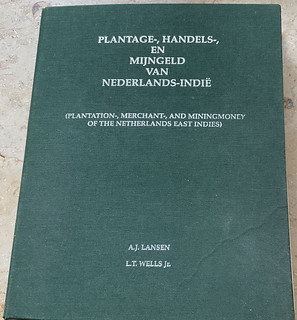 Author Adrian J. Lansen of the Netherlands writes:
Author Adrian J. Lansen of the Netherlands writes:
"I am writing a complete new book on the tokens, especially the plantation tokens, issued in British North Borneo in the period of c. 1880 till 1924. As background I use our 2001 book on Plantation Tokens of the Netherlands East Indies and British North Borneo, edited and written in cooperation with Prof. L.T Wells jr. co-editor from Boston (USA) and the book of Saran Singh (Malaysia). I invite any collector of these tokens to contact me to exchange information about potentially new discoveries in these area. They can mail me at : lansenkil@hotmail.nl"
Can anyone help? Ad kindly provided images of the earlier book and an assortment of tokens as an example. -Editor
To read an E-Sylum article on one of Ad's other books, see:
NEW BOOK: DUTCH EAST INDIES PLANTATION TOKENS
(https://www.coinbooks.org/v25/esylum_v25n07a04.html)
TARIFF TURMOIL TROUBLES COIN TRADE
This is a topic best left to real numismatic reporters and their editors and fact-checkers, but here are some developing stories, issues and opinions on the new U.S. tariff regime's effect on worldwide numismatic trade. First is a note sent to clients Friday by Mike Gasvoda, Managing Director, Classical Numismatic Group, LLC. -Editor
President Trump has introduced tariffs for the majority of imports into the US, including collector coins. While changes to these tariffs may be made at any time without notice, and we don't know what the future will bring, here is what we know as of 10 AM on April 4:
- No coins have been exempted from the tariffs.
- Coins entering the United States will be subject to tariffs based on the country of origin, meaning the country of manufacture. A coin from a mint located in what is now modern Greece will be tariffed at the rate for Greece (i.e., the European Union) regardless of where the coin has been held or where it is shipped from.
- Although tariffs are not the same as import VAT, our European customers and colleagues are familiar with the taxation of incoming coins. US customers have not had to deal with this issue in the past. One difference from import VAT is that, as far as we know, tariffs that are paid cannot be reclaimed later upon export from the US.
- Coins already in the United States and sold to buyers in the United States are not subject to any tariff.
- Coins already in the United States and sold to buyers outside the United States continue be subject to regulations of the buyer's home country.
- Coins purchased by US buyers from dealers or auction houses abroad will be subject to US tariffs, even if those coins were consigned to the sellers by collectors or dealers in the US.
- The US buying market is believed to constitute the majority of world purchasing power of ancient and world coins.
The good news for US customers of CNG is that the coins in our auctions through the end of June are already in the US at our Lancaster, PA headquarters. None of these coins, when sold, will be subject to any new US tariffs. This gives us three months to evaluate how this situation might change. (The one exception is our Islamic Auction 9, which will be held in London on 24-25 April 2025.)
One thing is certain at the moment: if coins are sent from the US to other countries, they are subject to US tariffs if they are returned or sold back into the US. US collectors will need to think carefully before sending coins abroad, whether on consignment or for any other reason. And US collectors buying from foreign auctions will need to factor in the tariff costs when deciding how to bid. For the moment, coins sold in the US face no additional costs for US buyers, but coins sold outside the US will incur tariffs if they are imported into the US.
CNG is an international firm, fully capable of conducting auctions in both Europe and the US, and as such we will be able to respond to this changing situation in the way that best serves both our customers and buyers.
We at CNG will be monitoring developments and will do our best to keep numismatics as enjoyable and rewarding as possible for all our customers, wherever they may be.
I also understand that Nomos has postponed their sale 35, merging it with sale 36 planned for June. Naturally, they, CNG and other firms are seeking clarification on whether and how the new tariffs apply. Here are some of the questions and thoughts people have shared:
- Will tariffs be applied to (and probably added to the cost of) numismatic purchases from sellers overseas?
- That will effectively stop my purchases from European dealers and auctions, unless they come to US shows. But given the current insanity, why would they want to?
- How about buying a coin struck in a country that no longer exists, like some ancient city state? I can just imagine customs trying to figure that one out! Or buying an American colonial from England? Is it American and thus not tariffed, even if coming from the UK? Or was it a British colony and thus tariffed at 10%? Unless it was meant for New Orleans in which case it was a Spanish and French colony and thus tariffed at 20% - or is it 20% for each country that had control of the city?
The Greysheet published this note from the National Coin and Bullion Association:
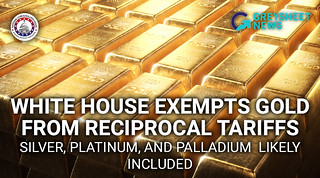 "Detailed in an official fact sheet released on April 2, 2025, gold is explicitly spared from the duties under an exemption for bullion; silver, platinum, and palladium are likely included, pending further confirmation, though they are not individually named.
"Detailed in an official fact sheet released on April 2, 2025, gold is explicitly spared from the duties under an exemption for bullion; silver, platinum, and palladium are likely included, pending further confirmation, though they are not individually named.
"The policy, tied to an executive order declaring a national emergency, lists bullion
as exempt from the tariffs—a category widely understood to encompass gold, silver, platinum, and palladium in forms such as coins, bars, and ingots. This ensures that gold, a cornerstone of the precious metals market, avoids additional costs. Silver, platinum, and palladium, also commonly traded as bullion, are presumed covered, based on industry standards. Copper, steel, and aluminum are also among the exemptions listed, though the focus for the numismatic and bullion community remains on the precious metals.
"While gold's exemption is clear, the absence of explicit mentions of silver, platinum, and palladium has sparked some uncertainty. Market reports and discussions on X suggest these metals are safe, with platinum and palladium premiums dropping post-announcement, signaling trader confidence in their inclusion."
To read the complete article, see:
White House Exempts Gold from Reciprocal Tariffs; Silver, Platinum, and Palladium Likely Included, Offering Relief for Numismatic and Bullion Markets
(https://www.greysheet.com/news/story/white-house-exempts-gold-from-reciprocal-tariffs-silver-platinum-and-palladium-likely-included-offering-relief-for-numismatic-and-bullion-markets)
Ken Spindler writes:
"I wonder how the heck eBay is going to deal with it. eBay would have to determine the rate to be assessed based on the current geopolitical classification of the issuing entity, even ancients, without regard to the location of the seller, if outside the U.S. If I bought from abroad a coin of Galicia, the region my father's parents came from, when it was issued it would have been a coin of an Austro-Hungarian province, and for many years later part of the Russian Empire, and now it is in Ukraine.
"Maybe sellers will have to specify the country of origin when posting eBay auction/sale items, then consult a chart to predict what U.S. tariff percentage will be deducted from the hammer price. Maybe we will start to see NO SALES TO USA ADDRESSES, etc.
"Logically, (non-bullion) numismatic and philatelic items should be exempt from U.S. tariffs since they are not by nature fungible goods. Such relics of world history could not have been or now be produced in the U.S.A., at least if not originally of U.S. origin.
"Holy cow, American bids are certain to decrease in frequency and amounts (quantity and quality) significantly."
Stack's Bowers Galleries sent this note on Saturday:
"Items in the 2025 April Hong Kong catalog identified by a (t) were sourced from outside of the United States and therefore subject to tariff when imported into the United States. Since the printing of this catalog, the United States has since increased the tariffs due on goods manufactured in China, including Hong Kong and Macau by an additional 34%.
"Equally as important, any lots in this catalog not identified by a (t) were sourced from within the United States or otherwise imported into the United States prior to any tariffs being enacted and will not be subject to any additional amounts when reimported to the United States. While all the lots in the current April 2025 Hong Kong (SAR) Showcase Auction are currently on view in Hong Kong, the lots not identified by a (t) can be reimported tariff free under HTSUS code 9801 designated for foreign goods temporarily exported from the United States.
"Please note, this is not, and is not intended to be, a complete description of the applicable import tariffs and buyer remains fully liable for and agrees to promptly pay all tariffs and fees relating to the import of these items into the United States and neither Stack's Bowers Galleries nor any consignor will have any responsibility to pay any applicable tariffs or fees. Please consult your tax adviser with any questions.
"Stack's Bowers Galleries will be monitoring developments and do our best to keep our valuable clients informed."
Thanks to Dave Michaels and Mike Gasvoda of CNG, Ken Spindler, and others who shared their information and thoughts. What a mess. -Editor
VOCABULARY TERM: REPAIR AND RESTORATION
Here's another entry from Dick Johnson's Encyclopedia of Coin and Medal Terminology. -Editor
Repair and Restoration. If a medallic item is not too severely damaged it can be reworked and brought back to an acceptable state or condition. Physical damage – scratches, dents, nicks, pitting, blisters, fire damage, graffiti – can be restored usually by chasing. Chemical damage – tarnish, diffusion, stains, blotches, inexpert cleaning, fugitive patinas – can be restored by refinishing. Provided in all instances, of course, any damage on the piece to be treated is not already deteriorated beyond repair. Large edge nicks, generally, cannot be repaired. Where a similar size nick in a field can be easily repaired by chasing (metal is drawn from surrounding surface to fill the depressed area).
What should be restored? Coins, other than plugging a hole, cannot be restored. Perhaps this is proper. The intent of their makers was to strike a coin without finish to circulate as a medium of exchange where abrasion due to wear is a natural proceeding. Medals on the other hand, were not intended to circulate or wear. The intent of their makers was to create an attractive art object, to remain pristine, often with an attractive finish, to last for a long time.
Restoring actually changes condition. A coin's condition should not be upgraded once it has worn – that was its purpose. But in the vicissitudes of time that affects all objects, medals darken or tone, they may be dropped, or other objects dropped on them. This was not how their creators intended them to exist; they can and should be upgraded or restored to the pristine condition their creators intended. Therefore, the only rule of restoring and refinishing a medal is not the propriety of doing so, but that the cost is justified: the piece itself is valuable enough to warrant the cost of the restoration work.
Restoring medals. Impaired medallic items are restored by a number of steps. These include: (1) delacquer and clean; stripping off, removing all lacquer and dirt and degreasing where necessary; (2) reverse plating; removing any plated metal if present; (3) determining the base metal (the experienced chaser can do this by observing color and testing hardness), and by determining what can and cannot be done in any restoration work; (4) repairing by plugging offensive holes, if any; (5) chasing work, the smoothing of dents, nicks or scratches, removal of unwanted graffiti; (6) other work on the base metal such as inscribing, removal or adding loops and replating; (7) refinishing in all of its processing including relacquering; and finally, (8) remounting if necessary, replacing ribbon, links, jump rings, chains for suspension or whatever.
Restoring dies. Some restoration work can be done on dies. Old dies generally need attention to remove rust and corrosion by chasing – smoothing out rust pits are possible. Chasing is usually done after the die is annealed to soft state (but can be done at any hardness). Also worn or filled lettering can be recut or re-engraved to sharpen up worn areas; rough areas can be burnished. Old dies are often found in brittle state; they are tested for hardness. Then the die is tempered – heat treated – to withstand the pressure of striking. In all this action to improve the die, however, one thing cannot be done – once a die starts to sink, nothing can be done to repair this damage and the sinking will continue during any continued striking.
In all restoration work experience and knowledge – of alloys, metalworking, patinas, finishing, chasing – is critical. This is not an area for the amateur or the inexperienced. Inexperienced repair work looks worse than the original damage. Have a professional do it!
To read the complete entry on the Newman Numismatic Portal, see:
Repair and Restoration
(https://nnp.wustl.edu/library/dictionarydetail/516623)
CHARLES ROY CLARK, JR. (1928-2024)
E-Sylum Feature Writer and American Numismatic Biographies author Pete Smith submitted this article on Florida collector and author C. R. Clark, Jr. Thanks! -Editor
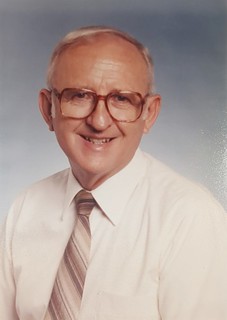 The TAMS Journal for March-April 2025 noted the death of C. R. Clark, Jr. As a numismatic
author, he deserves to be mentioned in The E-Sylum.
The TAMS Journal for March-April 2025 noted the death of C. R. Clark, Jr. As a numismatic
author, he deserves to be mentioned in The E-Sylum.
Clark was born on April 10, 1928, In Princeton, West Virginia. His father was Charles Roy Clark, Sr. (1902-1969), a pipefitter with the railroad, and mother was Hassie Roles Clark (1904- 1976). At age fourteen Charles joined his father to work as a brakeman on the Virginia Railroad.
He married Virginia Marion Vest (1927-2008) on March 18, 1949. They had a son, Robert.
Charles attended Bluefield Junior college. He was a star basketball player who led his team to the junior college final four. He graduated from East Tennessee State University in 1950 with a degree in engineering, physics and math.
C. R. Clark and Marion moved to Hurley, Virginia, for a year in 1950 to 1951 while C.R. taught math in high school. He also coached the basketball and football teams. He left to serve in the Air Force as an in-flight fuel instructor during the Korean War 1951 to 1955.
He received an MS in business administration from the University of Kentucky in 1960. The couple moved to St. Petersburg in 1957. Clark taught mathematics at St. Petersburg high school from 1957 until retirement in 1990.
He was a collector of Florida tokens and a specialist in the field. He joined the board of the Florida Token Society in 1975 and served as the president 1978 to 1980. He was the editor of Tokenews, their quarterly publication from 1979 to 1985. He wrote articles for the TAMS Journal and other token publications.
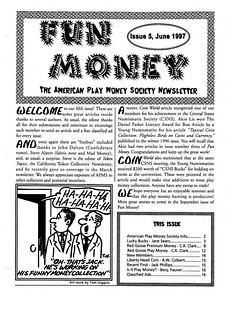 He was the author of Florida Trade Tokens published in 1980 and Florida Tokens published in
1990. He was an active member of the Southeast Token Society (SETS).
He was the author of Florida Trade Tokens published in 1980 and Florida Tokens published in
1990. He was an active member of the Southeast Token Society (SETS).
He was vice president of the American Play Money Society (APMS) and contributed articles to
their newsletter, Fun Money. The June 1996 issue had his article on Northwestern School
Supply Company Educational Toy Money.
The December 1996 issue had A Close Look at Red
Goose Premium Money©.
These are just examples of many articles on toy money.
In 2007, the Florida Token Society presented C. R. Clark and Marion with their Lifetime Achievement Award. The club issued two plastic tokens and an elongated coin to commemorate the event. Clark died on November 6, 2024, in St. Petersburg, Florida. He was cremated with his ashes placed with Virginia Marion Clark at Bay Pines National Cemetery.
To read issues of Fun Money on the Newman Numismatic Portal, see:
Fun Money
Newsletter of the American Play Money Society
(https://nnp.wustl.edu/library/publisherdetail/528207)
TREASURE TALK WITH BOB EVANS, EPISODE 2.2
In January, our good friend Bob Evans began publishing a series of blog articles on the Finest Known website detailing his experience as co-discoverer and curator of the treasures recovered from the wreck of the S.S. Central America. Subject of the book "Ship of Gold", many exhibits, countless interviews and articles, books and auction catalogs feature the legendary haul of gold coins, bars, nuggets, gold dust and more from the 1857 shipwreck. Here's another excerpt - see the complete article online. -Editor
Before that moment standing over the light table in the ship's darkroom, whenever I thought about the SSCA treasure, I imagined a big pile of coins, perhaps piles of degraded bags of coins, like moneybags
from the cartoons of my youth. Or Scrooge McDuck's money room that he could swim in. Now we saw the reality, a collapsed and jumbled pile of degraded boxes of coins, along with boxes of ingots of various sizes.
The manipulator we had installed on Nemo, was pretty high-tech, and could grab and lift hundreds of pounds if necessary. But it needed adaptations for delicate work. The engineers and techs built flexible fingernails,
something like spring-loaded calipers, or a gonzo pair of tweezers, with rubberized tips.
Here's an artist's conception (mine):
The pilot could grasp a fragile object, and, while watching the long springy fingernails deflect with additional force, apply just enough pressure to pick it up without shattering. Pilot John Moore used it when grabbing that bottle we picked up in our first practice recovery.
With the ship's treasure at last being found, Bob was able to debunk once and for all a theory about the ship's cargo that had bounced around for years. -Editor
The Coverdell Letter states that there was a Army shipment
of 600 fifty-pound bars of gold that was lost on the S.S. Central America. I won't waste much time on a deep retrospective analysis here. There are many ways in which such a transport of gold is implausible or impossible. There is no other verifiable historical record of such a shipment, nor any plausible historical justification for why such a shipment would have been made, nor even any reason why such uniform-size bars, 50 pounds, as referenced in the document, would be made. But I did not yet know this in 1988. Like I mentioned before, I was not yet a numismatist.
Finding bars as part of the commercial shipment was unexpected. We were expecting coins. It was confusing at first, and we thought it possible the existence of gold bars meant that it was the mythical Army shipment.
But, even at first sight, these ingots obviously were not 50-pound bars. They were not a standard size, ranging from brick-size down to domino-size. They were certainly far more interesting, and more massive in their reality than the phantom tons of an imaginary hoard.
As a further note, After the return
season of 2014, I have now personally examined every place on this shipwreck site where such a gold bar deposit of 30,000 pounds could be found. In my opinion, it is not there. It is interesting how a forged document, likely fabricated around 1970, about a shipwreck from 1857, can linger within the treasure hunting
culture and become, almost by overwhelming human desire, a part of the myth of the pre-discovered treasure, until finally dispelled by the discovery of the physical reality. This is a discussion for philosophers, or brandy, or both.
In short, the bars we found are not those bars, and although not comprising as stupendous a sum as the fictitious 15 tons, the monetary ingots we did find were certainly mind-boggling, thousands of pounds of glorious historical treasure, revealing stories and details not told in the history books.
As the first human to examine this amazing cache in over a century, Bob was able to discern details that no numismatist in generations had been privy to. -Editor
There is something magical about a gold bar. No matter how large it is, the weight is reliably surprising when you take it in hand. The behemoth bars are almost hazardous to handle. And the little bars are just plain cute, but still hefty.
Examination of the first bar we recovered revealed the pattern and practice of them all. No matter what size, they all were marked with the same five pieces of information:
- a maker's mark, the company who cast the ingot
- a serial number, unique to that ingot, and presumably to comparable matching business documentation
- the number of Troy Ounces, to the hundredth of an ounce
-
the purity, expressed as
Fine,
which is parts per thousand - the dollar value, just like a total at the bottom of a ledger, in dollars and cents
I ran the algebra on a bar. $20.67179 per ounce for the pure gold. (My thoughts: Hmm. That's interesting.
)
It was obvious that those five pieces of information made the piece into usable money. A monetary ingot. The bar was a coin.
It was just a coin of a unique non-uniform denomination. The bar was specie.
And so, it all made historical sense. The Garden of Gold deposit contained the specie
of the historical accounts. This was the reality of the words I had seen in fuzzy microfilm four years earlier.
$1,219,189.43 in specie.
Before we found the gold bars, I had always wondered why the shipment was listed down to the cent. You can't match that figure using gold coins. Were they shipping pennies? The answer: monetary ingots were a large part of the shipment, and the bars were each calculated to the cent. Thus, uneven
dollar amounts.
To read the complete article, see:
Treasure Talk: Episode 2 Part 2 THOSE AMAZING GOLD BARS
(https://finestknown.com/treasure-talk-episode-2-part-2those-amazing-gold-bars/)
For the complete series, see:
Category Archives: Treasure Talk with Bob Evans
(https://finestknown.com/treasure-talk-with-bob-evans/)
To read the earlier E-Sylum articles, see:
TREASURE TALK WITH BOB EVANS, EPISODE 1
(https://www.coinbooks.org/v28/esylum_v28n12a12.html)
TREASURE TALK WITH BOB EVANS, EPISODE 2.1
(https://www.coinbooks.org/v28/esylum_v28n13a17.html)
NUMISMAGRAM MEDAL SELECTIONS: APRIL 6, 2025
Numismagram's Jeremy Bostwick sent along these five medals from his most recent upload of new material to his site. For all of the new items, please visit https://www.numismagram.com/inventory. -Garrett
102935 | FRANCE. Strasbourg Cathedral bronze Medal. Issued 1861. Most Remarkable Edifices of Europe series (59mm, 12h). By Jacques Wiener in Brussels and struck at the Geerts mint in Ixelles. CATHEDRALE DE STRASBOURG, perspective view of the cathedral exterior from the northwest, highlighting its ubiquitous single northern tower // Perspective view of the interior, looking down the nave toward the west from a vantage point just to the right of center; the western rose window is at the focal point; in three lines in exergue, LA 1e PIERRE POSÉE 1015 TOUR & / PORTAIL COMMENCÉS 1276 / TERMINÉE 1439. Ross M237 (R2); van Hoydonck 185; Reinecke 45. PCGS SP-63. Deep brown surfaces, with a bit of a glossy nature in the fields; a minor spot is noted in the lower right field, accounting for the designation. $545.
Described by Victor Hugo as a "gigantic and delicate marvel," Strasbourg Cathedral in the Alsace region of France was begun near the start of the 11th century and completed in 1439. Though many aspects are built in the Romanesque style, it also features some of the best examples of the Rayonnant Gothic style. For over 200 years, from 1647 to 1874, it served as the world's tallest building at 466 feet. Now, it is the world's sixth tallest church, and still serves as the tallest extant church constructed in the middle ages.
From what is today eastern Netherlands and western Germany, the Wieners were a Jewish family of exceptional medalists, especially known for numerous numismatic works throughout the Kingdom of Belgium. Eldest brother Jacob (Jacques), along with younger brothers Leopold and Charles, created some of the finest works of medallic art of the 19th century, and all are particularly noted for their work in the highly detailed and intricate work of architectural renderings.
To read the complete item description, see:
102935 | FRANCE. Strasbourg Cathedral bronze Medal.
(https://www.numismagram.com/product-page/102935)
103114 | UNITED STATES, ITALY & GERMANY. Christopher Columbus/Italian-American Expo aluminum Souvenir Medal. Issued 1892 for the 400th anniversary of the discovery of America and for the expo held in Genova (90mm, 80.88 g, 12h). By Wilhelm Mayer in Stuttgart. CRISTOFORO COLOMBO / NATO 1456 - MORTO 1506, half-length bust of Columbus facing slightly left, holding charts; star to left and right // RICORDO DELL' ESPOSIZIONE ITALO–AMERICANA GENOVA, two female allegories (Italia and America) to right, one seated and one standing, pointing at a distance to left over the expo ground; Nina, Pinta, and Santa Maria on horizon to left with rising sun; above, crowned coat-of-arms of Italy with griffins as supporters; in two lines in exergue, 1492–1892 / IV. CENTENARIO. Edge: Plain. Eglit 582 (this piece illustrated); cf. Eglit 261 (for seemingly a duplicate entry of the type); Starlust ST-eg-582; cf. Starlust ST-eg-261 (same); Rulau B5A; cf. Bernd Kaiser V, 126 (bronze). Choice Mint State. Highly lustrous and brilliant. An exceptionally impressive specimen, especially given its advanced state of preservation and unrivaled pedigree, as it even served as the plated example in Eglit's self-published 1965 reference. Ex Nathan Eglit Collection (Presidential Coin & Antique 52, 27 June 1992), lot 269, where Joe Levine described it as "Unc, even gray color, near perfect" and a "massive 3 1/2 inch medallic beauty!" $1,695.
During the lead-up to the quadricentennial of Columbus's initial contact with the New World, numerous medals were designed and struck, both in the United States—in conjunction with the 1893 Columbian Exposition in Chicago—and abroad, sometimes for this event or for similar others. In the case of this wondrous medal, the Italian-American Expo held in 1892 in Genova—the home of Columbus. This same general design would be used by Wilhelm Mayer the following year for related types associated with the World's Columbian Expo in Chicago. This item was featured in our E-Sylum ad.
To read the complete item description, see:
103114 | UNITED STATES, ITALY & GERMANY. Christopher Columbus/Italian-American Expo aluminum Souvenir Medal.
(https://www.numismagram.com/product-page/103114)
103019 | GERMANY & FRANCE. Black Shame/The Watch on the Rhine cast bronze Medal. Dated 1920. "Die schwarze Wacht am Rhein"—on the supposed sexual crimes against German women by Franco-African soldiers (58mm, 65.37 g, 12h). By Karl Goetz in München. DIE WACHT AM RHEIN!!, helmeted head of French-African soldier right, with heavily caricatured features such as the lower lip and stretched earlobe; in four lines to lower left, LIBERTÉ / ÉGALITÉ / FRATERNI / TÉ // DIE SCHWARZE SCHANDE, nude Lorelei (representing vulnerable German women in the Rhineland) with her arms behind her, chained to oversized male genitalia surmounted by helmet (representing supposed sexual crimes committed by Franco-African soldiers); broken lyre to left, with tops terminating in heads of eagles; radiant Eye of Providence above, with rays almost acting as tears. Edge: Plain. Kienast 262; Jones, Dance of Death, 52. Choice Mint State. Darker olive-brown surfaces, with a few light casting flaws near the edge. An extremely provocative and popular medal. $895.
Following Germany's defeat in World War I, French and British troops occupied portions of Germany to ensure that reparations would be paid. In some areas, such as the Rhineland, France utilized colonial troops from North Africa for patrolling and occupying—possibly serving as an act of further humiliation—making the local Germans be subject to those who were, in turn, subject to a colonial power. Within Germany, however, sentiments became overtly racialized, with anti-African propaganda found everywhere in the print media, and with caricatures and stereotypes endlessly employed. This biased and unfounded campaign even found its way into numismatics, with many medals featuring iconography that reveals these feelings. At the forefront was the belief that African troops, racially portrayed as oversexed and primal, were ravaging German women. Though this campaign subsided in the early 1930's, it wasn't the first appearance of this form of racism, and certainly wouldn't be the last. Along with the "Sinking of the Lusitania" medal, this extremely provocative medal stands as one of the more iconic, controversial, popular, and rather infamous (all at the same time) of Goetz's entire oeuvre.
To read the complete item description, see:
103019 | GERMANY & FRANCE. Black Shame/The Watch on the Rhine cast bronze Medal.
(https://www.numismagram.com/product-page/103019)
102967 | GERMANY. Dr. Hugo Eckener silver Medal. Issued 1929. Commemorating the world tour of the LZ 127 Graf Zeppelin (36mm, 12h). By Karl Goetz at the München mint. Dr ECKENER WELT–FAHRT MIT "GRAF ZEPPELIN", bust left / TOKIO • LOS ANGELES • LAKEHVRST • FRIEDRICHSHAFEN, the earth surrounded by a zodiacal band and highlighted by onlookers to the east and west, and a polar bear to the north; the airship flies above, guided by an eagle. Edge: BAYER. HAUPTMÜNZAMT • FEINSILBER. Kienast 429; Hans Kaiser 497. PCGS SP-62 Matte. Light gray surfaces, with some hints of amber-cabernet toning around the devices. $395.
Zeppelin was a German general and aircraft manufacturer, who later founded the airship company Luftschiffbau Zeppelin. Following Zeppelin's death in 1917, Dr. Hugo Eckener became the head of this company and oversaw post-war fundraising to expand upon its production, even serving as commander for the LZ 127 on numerous occasions. When this airship first entered use, it was the first commercial passenger transatlantic flight service in the world, eventually making 590 flights over nearly a decade. In 1940, she was scrapped for metal for the German efforts in World War II.
To read the complete item description, see:
102967 | GERMANY. Dr. Hugo Eckener silver Medal.
(https://www.numismagram.com/product-page/102967)
103146 | GREAT BRITAIN. "The Fruit of Knowledge" cast bronze Medal. Issued 1989 (62mm, 110.01 g, 12h). By Gordon Summers [then studying jewellery and silversmithing at Loughborough College of Art and Design] for the British Art Medal Society. Upper torso of male figure (representing Science), with chain upon each wrist, one of which is connected to his neck, about to eat an apple; below, small male pulling upon rope that is looped around tree and connected to the neck of Science // Lower nude torso of the same male figure (Science), with the Tree of Knowledge to left (visually similar to a stylized nuclear explosion). Edge: Plain. Attwood 58 & pp. 40-41; "The Medal" 14, p. 92. As Made. Olive-bronze surfaces. A rare and provocative issue, with an output of just 27 pieces. $565.
In "The Medal" 14, Gordon Summers wrote about this design, stating that "...this medal concerns man's lust for knowledge and the possibility of the fruits of this desire being used for evil ends. The large figure represents the man of science, readily craving after knowledge and being pressurised to make that fatal move which may lead to disaster. The man is trapped between the two possible outcomes of his search: good and evil. On the reverse I have pictured the tree of knowledge with the intention of confusing it visually with a nuclear explosion. Knowledge is not wisdom. We must therefore use our own wisdom to control its results." Interestingly, while the threats of nuclear war were more front-of-mind when this medal was created in 1989, one could see a more current pursuit, that of artificial intelligence (AI), as our trapping of two outcomes today. As the author of this medal stated, "knowledge is not wisdom," and one can easily argue that artificial intelligence is neither intelligence nor wisdom, and we hopefully will retain enough wisdom to control its results, lest it begin to control us.
To read the complete item description, see:
103146 | GREAT BRITAIN. "The Fruit of Knowledge" cast bronze Medal.
(https://www.numismagram.com/product-page/103146)
HERITAGE AUCTIONS: ROMAN REPUBLIC ANCIENT COINS
Heritage Auctions will be hosting their Roman Republic Ancient Coins Showcase Auction on April 7. Select items are discussed below. -Garrett
Marc Antony and Octavian, as Imperators and Triumvirs (ca. 43-33 BC). AR denarius (22mm, 3.53 gm, 12h). NGC VF 4/5 - 2/5, bankers marks, die shift. Ephesus, 41 BC. M•ANT•IMP AVG III VIR•R•P•C•M BARBAT•Q•P (MP and AV ligate), bare head of Marc Antony right / CAESAR•IMP•PONT•III•VIR•R•P•C•, bare head of Octavian right with touseled hair and long sideburn. Crawford 517/2. Sydenham 1811. Antonia 51, Barbatia 2 and Julia 96.
To read the complete item description, see:
Marc Antony and Octavian, as Imperators and Triumvirs (ca. 43-33 BC). AR denarius (22mm, 3.53 gm, 12h). NGC VF 4/5 - 2/5, bankers marks, die shift.
(https://coins.ha.com/itm/ancients/roman-republic/roman-republic-marc-antony-and-octavian-as-imperators-and-triumvirs-ca-43-33-bc-ar-denarius-22mm-353-gm-12h-/a/61491-24125.s)
Anonymous (ca. 211-208 BC). AR victoriatus (18mm, 8h). NGC Choice XF. Uncertain mint. Laureate head of Jupiter right; dotted border / ROMA, Victory standing right, crowning trophy to right, with wreath in outstretched right hand; VB monogram in field between, linear border. Crawford 95/1b. Sydenham 113.
Ex Frank L. Kovacs, private sale with old dealer's tag included.
To read the complete item description, see:
Anonymous (ca. 211-208 BC). AR victoriatus (18mm, 8h). NGC Choice XF.
(https://coins.ha.com/itm/ancients/roman-republic/roman-republic-anonymous-ca-211-208-bc-ar-victoriatus-18mm-8h-ngc-choice-xf/a/61491-24006.s)
Julius Caesar, as Consul for the Third Time (ca. 46 BC), with Aulus Hirtius, as Praetor. AV aureus (20mm, 8.02 gm, 3h). NGC Choice Fine 5/5 - 4/5. Rome. C•CAESAR-COS•TER, veiled female head (Vesta or Pietas?) right, with features of Julius Caesar / A•HIRTIVS•P R, lituus, oenochoe, and securis, all turned left. Calicó 37c. Crawford 466/1. Sydenham 1017-1018. Hirtia 1 and Julia 22. A sunshine flan with a silty sheen.
Ex Lanz, Auction 147 (2 November 2009), lot 217.
To read the complete item description, see:
Julius Caesar, as Consul for the Third Time (ca. 46 BC), with Aulus Hirtius, as Praetor. AV aureus (20mm, 8.02 gm, 3h). NGC Choice Fine 5/5 - 4/5.
(https://coins.ha.com/itm/ancients/roman-republic/roman-republic-julius-caesar-as-consul-for-the-third-time-ca-46-bc-with-aulus-hirtius-as-praetor-av-aureus-20/a/61491-24106.s)
L. Valerius Flaccus (ca. 108-107 BC). AR denarius (20mm, 3.92 gm, 5h). NGC Choice XF 5/5 - 4/5. Rome. Draped bust of Victory right, wearing pendant earring and necklace of beads, hair tied in knot at back; barred X (mark of value) below chin / L • VALERI / FLACCI, Mars walking left, transverse spear in right hand, trophy in left over shoulder; apex before, tall grain ear behind. Crawford 306/1. Sydenham 565. RSC Valeria 11. Rosy champagne toning.
From the Collection of Jonathan Kern to Benefit Charity.
To read the complete item description, see:
L. Valerius Flaccus (ca. 108-107 BC). AR denarius (20mm, 3.92 gm, 5h). NGC Choice XF 5/5 - 4/5.
(https://coins.ha.com/itm/ancients/roman-republic/roman-republic-l-valerius-flaccus-ca-108-107-bc-ar-denarius-20mm-392-gm-5h-ngc-choice-xf-5-5-4-5/a/61491-24037.s)
C. Naevius Balbus (ca. 79 BC). AR serratus denarius (19mm, 3.93 gm, 7h). NGC Choice AU 5/5 - 4/5. Rome. Head of Venus right, wearing pendant earring, beaded necklace, and stephane, with bangs rolled and tucked into stephane, and flowing loose behind / C•NAE•BALB (AE and AL ligate), Victory driving unruly triga galloping right, holding reins, far horse looking back; CXXXXVIII above. Crawford 382/1b. Sydenham 769. Naevia 6. Lilac toning on a lustrous flan.
From the Collection of Jonathan Kern to Benefit Charity.
To read the complete item description, see:
C. Naevius Balbus (ca. 79 BC). AR serratus denarius (19mm, 3.93 gm, 7h). NGC Choice AU 5/5 - 4/5.
(https://coins.ha.com/itm/ancients/roman-republic/roman-republic-c-naevius-balbus-ca-79-bc-ar-serratus-denarius-19mm-393-gm-7h-ngc-choice-au-5-5-4-5/a/61491-24069.s)
Q. Servilius Caepio (M. Junius) Brutus, as Moneyer (ca. 54 BC). AR denarius (18mm, 3.60 gm, 12h). NGC XF 4/5 - 4/5. Rome. BRVTVS, bare head of L. Junius Brutus right / AHALA, bare head of C. Servilius Ahala right. Crawford 433/2. Sydenham 907.
During his term as moneyer in 54 BC, Marcus Junius Brutus issued two denarius types that would prove to be remarkably prophetic in a decade's time. This type celebrates his illustrious ancestors, including Lucius Junius Brutus, the first Consul of Rome, who in 509 BC initiated the conspiracy that overthrew the city's last king, Tarquin the Proud. The reverse honors Gaius Servilius Ahala, who in 439 BC used a dagger concealed in the folds of his toga under his arm to slay Spurius Maelius, a wealthy patrician who had plotted to make himself king. In 44 BC, Brutus himself would undertake a conspiracy to slay another tyrant, Julius Caesar, in which the conspiring senators concealed daggers within their togas.
Ex Künker, Auction 390 eLive (24 June 2023), lot 3047.
To read the complete item description, see:
Q. Servilius Caepio (M. Junius) Brutus, as Moneyer (ca. 54 BC). AR denarius (18mm, 3.60 gm, 12h). NGC XF 4/5 - 4/5.
(https://coins.ha.com/itm/ancients/roman-republic/roman-republic-q-servilius-caepio-m-junius-brutus-as-moneyer-ca-54-bc-ar-denarius-18mm-360-gm-12h-ngc/a/61491-24092.s)
AUSTRALIAN COIN WITH MORSE CODE
For the 100th Anniversary of the Royal Australian Corps of Signals, the Australian Mint released a $1 commemorative coin with Morse Code. Thank you to Don Cleveland for sending it. -Garrett
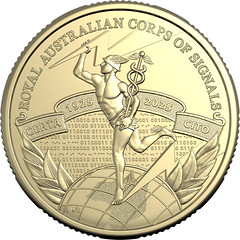 A new coin released by the Royal Australian Mint celebrates the Centenary of the Royal Australian Corps of Signals — but not all is at it seems.
A new coin released by the Royal Australian Mint celebrates the Centenary of the Royal Australian Corps of Signals — but not all is at it seems.
Beneath its golden facade, the $1 commemorative coin features a hidden message in code, just waiting to be cracked.
"[There are] some amazing design features of the coin, capturing our heritage," Royal Australian Corps of Signals Head of Corps, Brigadier Deane Limmer, said.
Coin rich in symbolism and history
The Royal Australian Corps of Signals was established in 1925, and celebrates 100 years of service in military communications this year.
Part of their role has been to provide communications, information systems and electronic warfare support to the Australian Army and the Australian Defence Force.
"Signallers have been at the forefront of technology, even back in the day," Brigadier Limmer said.
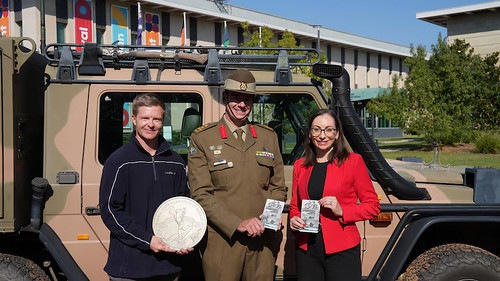
Coin Designer Adam Ball, Brigadier Dean Limmer, and Acting CEO Emily Martin,
outside the Mint. (ABC News: Tenzing Johnson)
More than a collectible
Ms Martin said it was "such an honour for the Royal Australian Mint to be helping to celebrate the centenary of the Royal Australian Core Signals today".
"It is not just a collectible," she said.
"It is a reminder of the ingenuity, sacrifice and strategic brilliance that has protected Australia for a century [and] a tribute to the men and women who have placed service above self, securing the nation's defences through the power of communications."
Ms Martin added that there would always be a place for collectors at the Mint.
To read the complete article, see:
Royal Australian Mint releases $1 commemorative coin with a message in Morse code
(https://www.abc.net.au/news/2025-04-03/mint-1-dollar-coin-coded-secret-message-corps-signals-centenary/105129128)
To read earlier E-Sylum articles, see:
MORSE CODE ON MONEY
(https://www.coinbooks.org/esylum_v16n19a18.html)
MORE ON S. W. CHUBBUCK
(https://www.coinbooks.org/esylum_v16n21a11.html)
ROYAL HUMANE SOCIETY SWIMMING MEDALS
Daniel Fearon of St. James's Auctions submitted this note about some interesting medals in the firm's upcoming sale. -Editor
One of the joys of collecting is the chance of the unexpected. St. James's Auction on 15th April ends with a small collection 34 medals issued by the Royal Humane Society for Proficiency in Swimming. The medal was first issued in 1882, when a mere seven were awarded, one each to a participating school. The award was to prepare the swimmer in the disciplines of life-saving and the prevention of drowning. In the 5th year of the competition in 1887, 26 of the handsome silver medals were awarded, one being to the 15-year-old Charles Creaghe Donovan, who attended the Royal Naval School, New Cross.
Donovan's subsequent career was in the military rather than navy and, with the rank of Captain in the Royal Artillery, he was stationed at Ferozepore in India when, on 30th August 1906 a fire broke out in the arsenal. The fire threatened to be a major disaster but was extinguished with Captain Donovan and Lieutenant E. F. Ross, Dorset Regiment, leading the firefighters and preventing over 300,000lbs. of gunpowder from exploding. Both Donovan and Ross were awarded the Albert Medal in gold (First Class) and a further 11 (2nd Class) were awarded in bronze. The Albert Medal in gold was abolished in 1949 and replaced by the George Cross which had been instituted in 1941.
Donovan retired from the army with the rank of Lt. Colonel shortly after the end of the First Word War and died in 1923. The whereabouts of his Albert Medal is unknown, His Royal Humane Society medal, some 2 ounces in weight, depicts a swimmer going to the aid of a damsel in distress, is estimated at £200-400. Emma Hulme, senior numismatist at St. James's, commented, it would be wonderful if Donovan's Albert medal were to come to light as a result of this sale – he was certainly a very brave man
.
Lot 473: Royal Naval School, New Cross: Royal Humane Society, Medal for Proficiency in Swimming, awarded to Charles Creagh[e] Donovan, 1887, in river setting, with trees and rushes, a man rescues a woman from drowning, NARE EST ALIENAM NOSSE SALUTEM, ex, school name and date, recipient's name engraved on edge, rev. legends, ROYAL HUMANE SOCIETY - INST: 1774, in centre, 'Awarded FOR PROFICIENCY IN SWIMMING EXERCISE with reference to saving life from DROWNING', 51mm., 59.81gms, 60.40gms., good very fine, lightly buffed at some time.
Lot 474: Royal Naval School, New Cross: Royal Humane Society, Medal for Proficiency in Swimming, awarded to Harry Ernest Chapman, 1888, in river setting, with trees and rushes, a man rescues a woman from drowning, NARE EST ALIENAM NOSSE SALUTEM, ex, school name and date, recipient's name engraved on edge, rev. legends, ROYAL HUMANE SOCIETY - INST: 1774, in centre, 'Awarded FOR PROFICIENCY IN SWIMMING EXERCISE with reference to saving life from DROWNING', 51mm., 59.81gms, good very fine, lightly buffed at some time. Ex. ‘A Fine Collection of Life Saving Awards', Noonans (DNW), 13 December, 2012 (lot 433).
To read the complete lot descriptions, see:
ROYAL HUMANE SOCIETY COLLECTION
(https://bsjauctions.auctionmobility.com/lots/view/1-ACMLCI/royal-humane-society-collection)
ROYAL HUMANE SOCIETY COLLECTION
(https://bsjauctions.auctionmobility.com/lots/view/1-ACMLCK/royal-humane-society-collection)
AMERICAN PROTECTIVE TARIFF LEAGUE MEDAL
John Sallay submitted this note on an interesting and suddenly very topical medal. Thanks! -Editor
I won't comment on the economic or political wisdom of the recently announced American import tariffs, nor even on the potential impact on the international numismatic marketplace. While likely to be significant regardless of what we collect, there is already plenty of commentary out there, and I imagine much more in store for us in the coming days.
In the current environment, we're all being reminded of the Smoot-Hawley Tariff Act of
1930. If you somehow missed this, you can read about it on Wikipedia at
https://en.wikipedia.org/wiki/Smoot%E2%80%93Hawley_Tariff_Act
and be amused by
its mention in the movie Ferris Bueller's Day Off
at
https://www.youtube.com/watch?v=uhiCFdWeQfA
Protective tariffs were the subject of considerable political debate in the several decades leading up to this culminating Act, and even the subject of an award medal for college seniors, shown in these photos, sponsored by The American Protective Tariff League in the late-nineteenth century. According to a brief article in the Harvard Crimson, on November 6, 1890,
The
American Protective Tariff League offers to undergraduate seniors in the colleges of the
United States a series of prizes for approved essays on the "Effect of Protection on the
Purchasing Power of Wages in the United States." The essays are not to exceed eight
thousand words and must be sent to No. 23 West Twenty-third Street, New York, before
March 1, 1891. Awards will be made June 1st, 1891, as follows: For the best essay, one
hundred and fifty dollars; for the second best, one hundred dollars; for the third best,
fifty dollars. The silver medal of the League will be awarded to the authors of other
essays deemed especially meritorious.
This particular example was awarded in 1887 to George Livingston Robinson (1863- 1958), who was then completing his undergraduate studies at Princeton, before his advanced studies there and elsewhere, and an illustrious career teaching. More on him can be found at https://en.wikipedia.org/wiki/George_Livingston_Robinson
Thanks! I'd never seen nor heard of the medal or organization before. Maybe I wasn't paying attention in school either. It's a nice design - does anyone know who designed and struck it? A web search uncovered another example and a similar one in bronze with a different reverse commemorating a 1901 Banquet at the New York Waldorf Astoria. -Editor
To read the complete item description, see:
American Protective Tariff League Silver Medal
(https://www.facebook.com/photo/?fbid=1365431877965091)
To read the complete item description, see:
The American Protective Tariff League Banquet
(https://emuseum.cornell.edu/objects/27684/the-american-protective-tariff-league-banquet)
NEW MEDAL HONORS JULIUS ROSENWALD
Mel Wacks submitted this announcement of the latest Jewish-American Hall of Fame Medal, which includes a discount for E-Sylum readers. Thanks. -Garrett
Philanthropist Julius Rosenwald
Also Feature Black Icon Booker T. Washington
The Jewish-American Hall of Fame is celebrating May as Jewish American Heritage Month by issuing art medals honoring Julius Rosenwald, who appears along with his friend and associate Booker T. Washington. These Renaissance-style high relief medals are the 56th in the longest continuing series of art medals in America.
No more than one hundred 3 ½ inch bonded bronze medals will be hand made by former U.S. Mint engraver Jim Licaretz and hand-patinated by medalist Eugene Daub. Daub won the American Medal of the Year Award in 2024, and Licaretz won the Award in 2023. The Rosenwald-Washington medals can be ordered for the special price of $160 each by calling the Jewish-American Hall of Fame at 818-225-1348 and mentioning The E-Sylum.
Mel Wacks, Director of the Jewish-American Hall of Fame, says that There is probably no person other than Rosenwald - who has been called the most important philanthropist you never heard of -- who is more deserving of this honor.
Julius Rosenwald was born in 1862 just a few blocks from Abraham Lincoln's residence in Springfield, Illinois. By his sixteenth year, Rosenwald was apprenticed by his parents to his uncles in New York City to learn the clothing trades, and together with his younger brother, Rosenwald started a clothing manufacturing company. In 1895, he became a part owner of Sears, Roebuck & Co., and in 1908 Rosenwald was named president. in 1924, Rosenwald resigned the presidency, but remained as chairman; his goal was to devote more time to philanthropy.
Booker T. Washington was born a slave on April 5, 1856, in Franklin County, Virginia. Between the ages of ten and twelve, he worked in a coal mine, while attending school. At the age sixteen, Booker T. Washington entered Hampton Normal and Agricultural Institute in Virginia, where his belief was reinforced in an educational system that emphasized practical skills and self-help.
In 1880, a bill that included a yearly appropriation of $2,000 was passed by the Alabama State Legislature to establish a school for Blacks in Macon County. Washington was named as principal. By Tuskegee's 25th anniversary, Washington had transformed an idea into a 2,000-acre, eighty-three building campus that, combined with such personal property as equipment, live stock and stock in trade, was valued at $831,895. Tuskegee's endowment fund was $1,275,644 and training in thirty-seven industries was available for the more than 1,500 students enrolled that year.
Booker T. Washington wrote 40 books, including an autobiography titled Up From Slavery
(1901) - which thanks to happenstance was read in 1910 by Julius Rosenwald.
A friendship sparked, resulting in the building of nearly 5,000 schoolhouses in Black communities across the South, where existing facilities, in Washington's words, were as bad as stables
— if there were schools at all. Rosenwald contributed up to half of the cost (totaling about 4.4 million dollars – equivalent to 78 million dollars today), and the community raised the balance. With a scope that would be deemed unattainable today, this audacious scheme is credited by present-day economists with having created a new Black middle class in the South.
Graduates have included civil rights activists John Lewis and Maya Angelou.
IRAN'S CAR MAKERS TRADE NUTS FOR BOLTS
Iranian imports of car parts from China have declined significantly in 2024, causing a shortage. The main cause is limited access to foreign currency. -Garrett
In a typical year, 10 out of every 100 dollars that Iran spends on Chinese goods goes towards car parts. While the China-Iran trade relationship has languished under sanctions, China has remained a critical supplier for the Iranian automotive industry, which continues to produce over one million automobiles annually.
But over the last year, Iranian automakers have struggled to keep the parts flowing. Parts imports from China totalled $653 million in 2024, a precipitous 43 percent decline when compared to the previous year.
The fall in imports has led to a shortage of car parts in Iran, with consumers facing long wait times and soaring prices. The impact has been most acute for Iran's private sector automakers, who mainly assemble cars using complete knock-down kits imported from China. Whilst Iran's state-owned automakers are supported by a large ecosystem of domestic parts manufacturers, private-sector automakers remain heavily dependent on Chinese imports to keep their customers' cars on the road.
The main cause for declining imports has been a lack of access to foreign currency, a consequence of US secondary sanctions restricting Iran's banking relations with China. Even though Iranian oil exports to China have rebounded in recent years, they have not alleviated Iran's foreign exchange crisis. Iranian companies seeking to import goods from China have struggled to receive timely allocations of renminbi through the Central Bank of Iran's foreign exchange market.
As the currency bottleneck grew tighter over the course of 2024, imports continued to fall, and by the summer, the situation was being described as a crisis.
In September, imports of car parts from China hit a nadir, with just $26 million worth of parts departing for Iran that month—a 65 percent year-on-year drop.
The outlook for the Iranian automotive industry looked dire until Iranian automakers stumbled upon an unexpected solution. In need of a new source of renminbi, many Iranian automotive firms turned to the pistachio business. Like oil, pistachios are a valuable commodity in which Iran is a world-leading producer. Unlike oil, pistachios are exempt from secondary sanctions.
Iranian automotive companies began purchasing pistachios from growers and leveraging their logistics networks to ship them to China. As a result, Iranian pistachio exports to China quickly surged to historic highs, enabling a modest recovery in car parts imports. In the last six months of 2024, Iran exported $195 million worth of in-shell pistachios to China—more than 2.5 times the volume achieved in the same period in 2023.
To read the complete article, see:
To Avoid a Currency Crunch, Iranian Automakers Are Trading Nuts for Bolts
(https://www.bourseandbazaar.org/articles/2025/3/25/to-avoid-a-currency-crunch-iranian-automakers-are-trading-nuts-for-bolts)
UAE CENTRAL BANK'S NEW DIRHAM SYMBOL
Kavan Ratnatunga passed along this article about the new symbols for the United Arab Emirates dirham. Thanks. -Editor
The Central Bank of the UAE (CBUAE) has unveiled a new symbol for the country's national currency, the dirham, as part of a move to strengthen the Emirates' position as a leading global financial hub.
The new symbol was chosen to represent the stability of the Emirati dirham while also paying tribute to the country's flag. The CBUAE also revealed the symbol for the digital dirham.
"The letter was chosen, derived from the English name of the dirham, to serve as an international symbol representing the nation's currency, incorporating two horizontal lines that embody the stability of the UAE Dirham and inspired by the UAE flag, to enhance financial and monetary stability," read a statement from the CBUAE on Thursday.
 "The digital dirham symbol features a circle surrounding the physical currency symbol, using the colours of the UAE flag to reflect pride and national identity."
"The digital dirham symbol features a circle surrounding the physical currency symbol, using the colours of the UAE flag to reflect pride and national identity."
The issuance of the digital dirham, the central bank digital currency, is expected to take place in the last quarter of the year for the retail sector.
A CBDC is a digital form of a government-issued currency. They are similar to cryptocurrencies, except that their value is fixed by the monetary authority and equal to the country's fiat currency.
To read the complete article, see:
UAE Central Bank unveils new dirham symbol
(https://www.thenationalnews.com/news/uae/2025/03/27/uae-central-bank-unveils-new-dirham-symbol/)
The new symbol does not yet have a standard Unicode for use online. -Editor
Kavan adds:
All but Israel have one or two cross lines like the $
- United States: US Dollar $
- European Union: Euro €
- United Kingdom: British Pound £
- Japan: Japanese Yen ¥
- China: Chinese Yuan ¥
- India: Indian Rupee ?
- Russia: Russian Ruble ?
- South Korea: South Korean Won ?
- Israel: Israeli Shekel ?
- Turkey: Turkish Lira ?
- Nigeria: Nigerian Naira ?
- Maldives: Maldives Rufiya ?
- Bangladesh : Taka ?
- Saudi Arabia : Riyal
See also:
Dollar sign
(https://en.wikipedia.org/wiki/Dollar_sign)
FONT INSPIRED BY U.S. CURRENCY
A new typeface, Greed, has been created based on the font on U.S. currency. -Garrett
Greed, the typeface, is good.
Greed is pompous, ostentatious, and rude — a critical expression of our basest societal instincts. It is a bold, big-shouldered, unapologetic, and maximalist typeface, perfectly positioned for 2025, the year of more is more. Gordon Gekko would be proud.
Greed's designer, Positype's Neil Summerour, began his research twelve years ago after a friend and fellow designer suggested that he create a series based on the seven deadly sins. Wood type influences anchored some of the series, but for Greed, he turned to the intricate lettering of US currency. (The deadly sins series never took shape as prompted, but the prompt more than served its purpose for the eventual development and release of Greed.)
Honestly, I feel that so much of politics and society today is driven by Greed. Call it what it is.
- Neil Summerour
Summerour's process is research-heavy, absorbing all he can about his chosen influences, including, he admits, too much time studying US currency under a loupe.
He wanted to create a lowercase version (is it surprising that US currency communicates in ALL CAPS?) and find his point of view within the many inconsistencies he found in US currency lettering, so his research went into a drawer, and he started sketching.
In typical Summerour fashion, there are a lot of quirky extras, glyphs, and features. Greed encompasses a complete Latin set, including Vietnamese. There is a full set of numerals (because, money!). Designers can play with stylistic alternatives, small numerals, super- and subscripts, Open-type-enabled fractions, cap height numerals, and a large selection of global currency symbols. Adding to Greed's flexibility, Summerour took care to finesse the gaps inherent in wide, large serif typefaces. If your Open Type Standard Ligatures feature is on, you'll find a set of alternate lowercase letter sets, such as ‘n-n,' to help you adjust your designs quickly and efficiently.
To read the complete article, see:
Greed is a Maximalist Typeface Inspired by US Currency
(https://www.printmag.com/type-tuesday/greed-is-a-maximalist-typeface-inspired-by-us-currency/)
LOOSE CHANGE: APRIL 6, 2025
Here are some additional items in the media this week that may be of interest. -Editor
We often discuss the medals awarded to animals for their bravery. Many are for dogs, but cats, pigeons and even a horse have been honored for their helpful actions. How about bear? Today I came across the WWII story of Wojtek, a brown bear who assisted Polish troops. I found no references to Wojtek receiving a medal, but for illustration added what the seller described as "WW2 Polish 22nd Artillery Supply Company Collar Badge Wojtek
"
-Editor
Wojtek arrived at the 22nd Artillery Supply Company of the Polish II Corps by happenstance, when a young Iranian shepard traded the orphaned bear for a Swiss army knife, some chocolate, and canned beef. The Polish soldiers received a tiny cub in a burlap sack, who was placed under the care of a soldier named Peter Prendys. To everyone's delight, the animal quickly assimilated, and in 1944 he became Private Wojtek, meaning joyful warrior
in Polish. He was fed double rations, often washing it down with a beer.
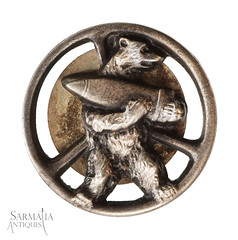 Wojtek's antics provided much-needed entertainment, but he was more than just a pet. The bear proved his worth on the battlefield when his company was reassigned to Italy. Eyewitness reports from May 1944, during the Battle of Monte Cassino, purport that Wojtek bravely carried artillery shells and ammo crates across the battlefield. After the battle, the company changed its insignia to a bear holding an artillery shell, and Wojtek was promoted to corporal.
Wojtek's antics provided much-needed entertainment, but he was more than just a pet. The bear proved his worth on the battlefield when his company was reassigned to Italy. Eyewitness reports from May 1944, during the Battle of Monte Cassino, purport that Wojtek bravely carried artillery shells and ammo crates across the battlefield. After the battle, the company changed its insignia to a bear holding an artillery shell, and Wojtek was promoted to corporal.
For the complete article and more, see:
A brown bear became an army corporal during WWII.
(https://historyfacts.com/world-history/fact/brown-bear-fought-in-wwii/)
Wojtek (bear)
(https://en.wikipedia.org/wiki/Wojtek_(bear))
The Story of Wojtek | The Polish Military Bear
(https://www.youtube.com/watch?v=mlp5K5T91jo)
WW2 Polish 22nd Artillery Supply Company Collar Badge Wojtek
(https://sarmatia-antiques.com/product/ww2-polish-22nd-artillery-supply-company-collar-badge-wojtek/)
FEATURED WEBSITE: PRIVATE MINT NEWS
This week's Featured Website is John Wang's Private Mint News.
Private mints and their issues have a long and illustrious history, but it is often hard to assemble, often years later without good documentation. When working with sovereign mints like the United States Mint, there is often a lot of archives and records available to research which is not available for private mints.
To address this, Private Mint News is a new online publication focusing on numismatics from by private mints. Private mint issues or creations, often in the form of tokens and medals called exonumia, is a rich and evolving area, however, research information can be thin on both classic and recent issues, especially the latter. The goal of Private Mint News is to assist in rectifying this situation by documenting and discussing issues from Private Mints of all eras.
Coverage includes private mints issuers of all eras and locations with an initial focus on the United States. Modern issuer coverage will include Daniel Carr of Moonlight Mint, Ron Landis of Gallery Mint Museum, Jared Grove of Grove Minting, Provident Metals, and other issuers. Classic issuers will include issuers of tokens, medals and coins including Civil War Tokens, So-Called Dollars, Territorial and Pioneer coins as well as Private Patterns.
https://privatemintnews.com/
ABOUT THIS ISSUE: APRIL 6, 2025
As an editor, I try catching typos, poor formatting and other errors before we publish. That doesn't always happen, Sometimes things get through, and although we generally preserve back copies intact on our website, we do sometimes correct issues that I woulda/coulda/shoulda caught but didn't.
This week a mention in Pete Smith's article on C. R. Clark, Jr. caught my eye - it said that he was a contributor to Fun Topics, a publication of the American Play Money Society. Wait - Fun Topics is the current publication of Florida United Numismatists (FUN). Now, Clark was a Florida collector, and for a moment I wondered if Fun Topics had started elsewhere and been acquired by FUN, just like The Numismatist was acquired by the American Numismatic Association.
This is where the Newman Numismatic Portal came to the rescue. I looked up the American Play Money Society and they indeed had a periodical - called Fun Money. Since Fun Topics is so well known in the hobby it was an easy mistake to make.
FUN FACT: I built the first funtopics.com website for FUN at the request of FUN Board Member Fred Lake, the Florida-based numismatic literature dealer.
Curious to learn if the American Play Money Society was still active I checked the web and learned it closed down after publishing the June 2002 issue. Thankfully the periodical has been preserved. -Editor
Wayne Homren
Wayne Homren is the founding editor of The E-Sylum and a consultant for the Newman Numismatic Portal. His collecting interests at various times included U.S. Encased Postage Stamps, merchant counterstamps, Pittsburgh Obsolete paper money, Civil War tokens and scrip, Carnegie Hero Medals, charge coins and numismatic literature. He also collects and has given presentations on the work of Money Artist J.S.G. Boggs. In the non-numismatic world he's worked in artificial intelligence, data science, and as a Program Manager for the U.S. Department of Defense.
Garrett Ziss
Garrett Ziss is a numismatic collector and researcher, with a focus on American paper money and early U.S. silver and copper coins. He is also a part-time U.S. coin cataloger for Heritage Auctions. Garrett assists Editor Wayne Homren by editing and formatting a selection of articles and images each week. When he's not engaged in numismatics, Garrett is a Senior Honors student at the University of Pittsburgh.
Pete Smith
Numismatic researcher and author Pete Smith of Minnesota has written about early American coppers, Vermont coinage, numismatic literature, tokens and medals, the history of the U.S. Mint and much more. Author of American Numismatic Biographies, he contributes original articles to The E-Sylum often highlighting interesting figures in American numismatic history.
Greg Bennick
Greg Bennick (www.gregbennick.com) is a keynote speaker and long time coin collector with a focus on major mint error coins and US counterstamps. He is on the board of both CONECA and TAMS and enjoys having in-depth conversations with prominent numismatists from all areas of the hobby. Have ideas for other interviewees? Contact him anytime on the web or via instagram
@minterrors.
John Nebel
Numismatist, photographer, and ANS Board member and Fellow John Nebel of Boulder, CO helped the ANA and other clubs like NBS get online in the early days of the internet, hosting websites gratis through his Computer Systems Design Co. To this day he hosts some 50 ANA member club sites along with our
coinbooks.org site, making the club and our E-Sylum archive available to collectors and researchers worldwide.
Bruce Perdue
Encased coinage collector (encasedcoins.info) Bruce Perdue of Aurora, Illinois has been the volunteer NBS webmaster from its early days and works each week to add the latest E-Sylum issue to our archive and send out the email announcement.

